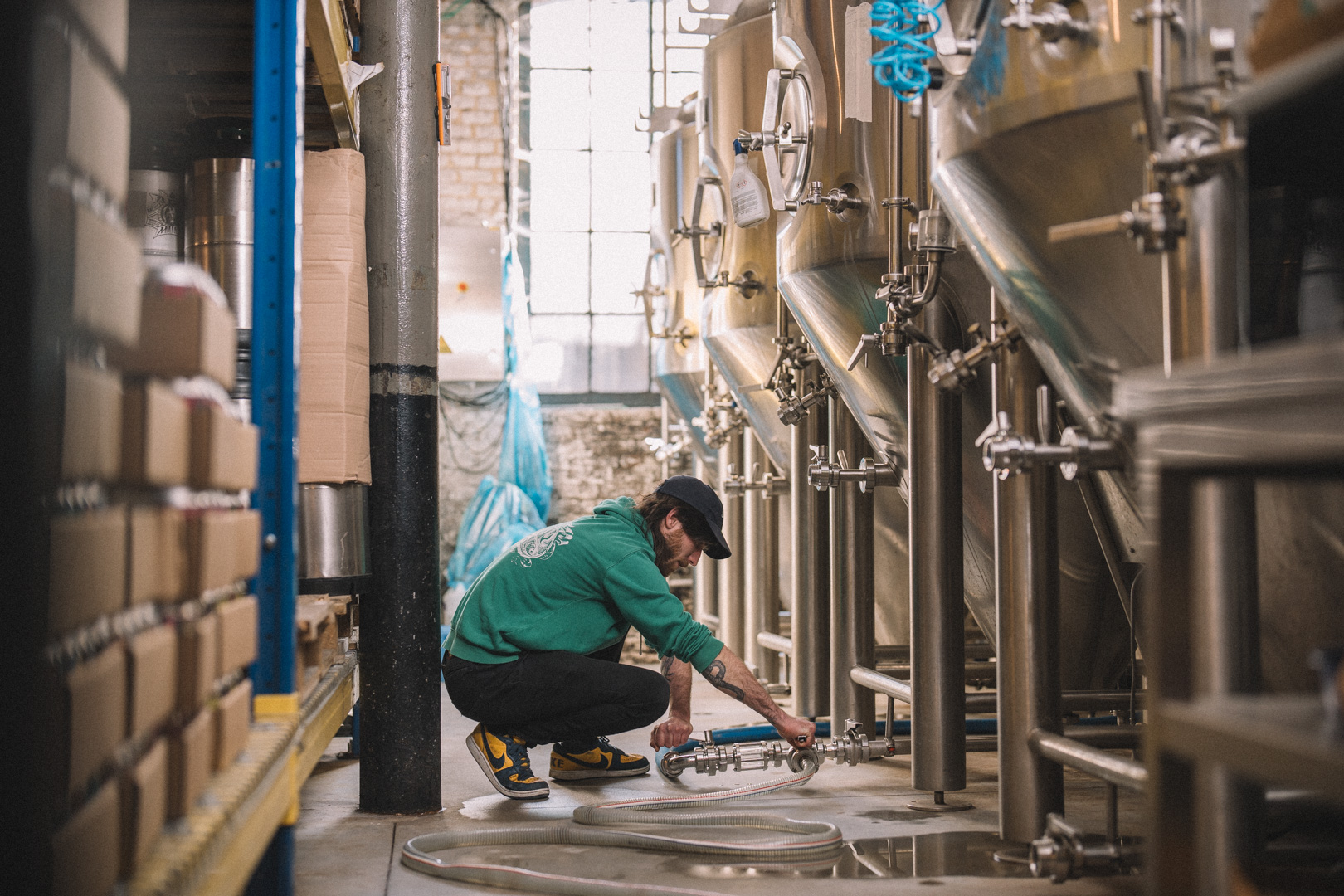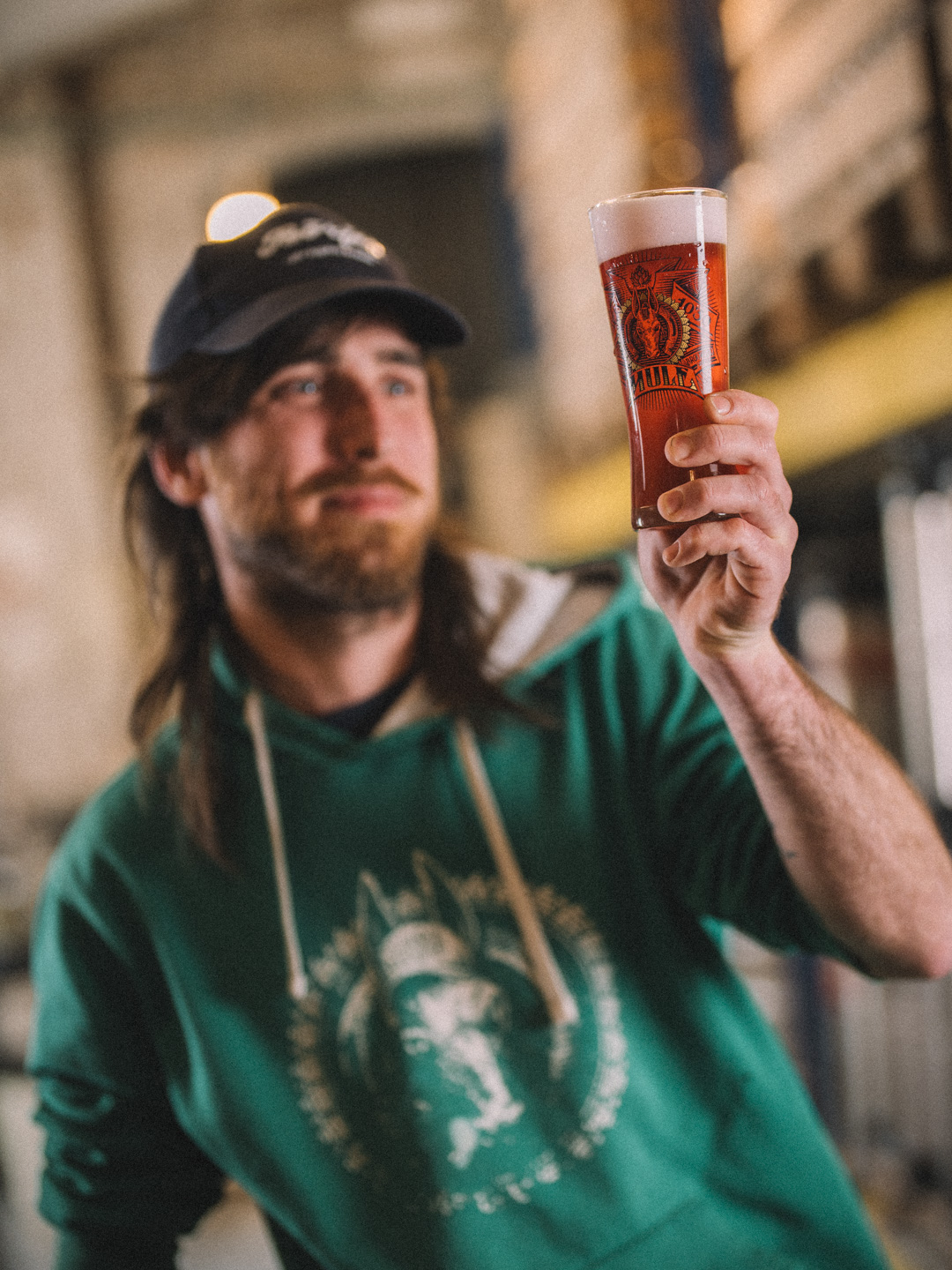How stubborn do you have to be to brew German style beers in Belgium—and be successful? To wrestle for years with Brussels bureaucrats? To host heavy metal concerts in an old tram shed? Joël Galy, quietly punkish, Swedish-born and Belgian-raised, should know. The former Brasserie de la Senne brewer is possessed of a tête de mule.
Words by Eoghan Walsh
Photos by Cliff Lucas
Edited by Breandán Kearney
This editorially independent story has been supported by VISITFLANDERS as part of the “New Arrivals” series.
I.
Steamboat
There’s a scene early on in the 1982 movie Fitzcarraldo where Klaus Kinski’s bug-eyed lead, a would-be rubber baron named Brian Sweeney Fitzgerald—or “Fitzcarraldo”—tries to explain why he needs money in the Andes mountains.
The scene reveals his monomania, his obsessive preoccupation with a singular thing: “Because I have one dream,” Fitzcarraldo says of his mission. “The great opera in the jungle.”
Fitzcarraldo’s dream of introducing European high culture to a remote Amazonian trading post involves, among other things, hauling a 320-ton steamboat over a steep hill separating two rivers. Belgian brewer Joël Galy may not share Kinski’s mania, and his dream—introducing German beer styles to Brussels in a neighbourhood brewery and taproom—was less outlandish. But the pair do share a persuasive glint in the eye, the same near-quixotic, evangelical passion. A tête de mule, Galy calls it, a mulish determination.
You need to be stubborn, pig-headed, if you have—like Kinski’s Fitzcarraldo—a grandiose dream. As Galy was to find out too, a tête de mule comes in handy when you’re trying to get anything done in the complicated chaos that is Belgium’s capital city.
In the Spring of 2020, Galy and two close friends were as close as they had ever come to finally opening the brewery they’d been working on for several years. It had a name—Brasserie de la Mule—and a logo. Galy had financing and a business plan. They knew what they were going to brew and the equipment they would use was on order. They’d even begun demolition works at the site they’d secured for the project—an abandoned tram shed in Brussels’ Schaarbeek neighbourhood. But as the pandemic summer ticked over into autumn, their sure thing was becoming not so sure.
Rolling Covid-19 lockdowns were playing havoc with Brussels’ hospitality industry, raising question marks about the viability of new projects. Galy’s landlords, never the easiest to work with, had gone worryingly cold on the prospect of hosting a brewery. Galy was staring down the prospect of taking delivery of a new brewhouse but having nowhere to put it. He’d been here before. Two years previously this same trio had embarked on a similar project, in another part of the city, only to see it collapse at an even earlier stage. Though now tantalisingly within reach, maybe Mule was doomed to failure too.
But Joël Galy is possessed of a tête de mule, a stubborn streak hidden beneath an easy affability. Now he had to put it to work. In Brussels, to get things done, sometimes you have to roll up your sleeves and push that boat up the hill.
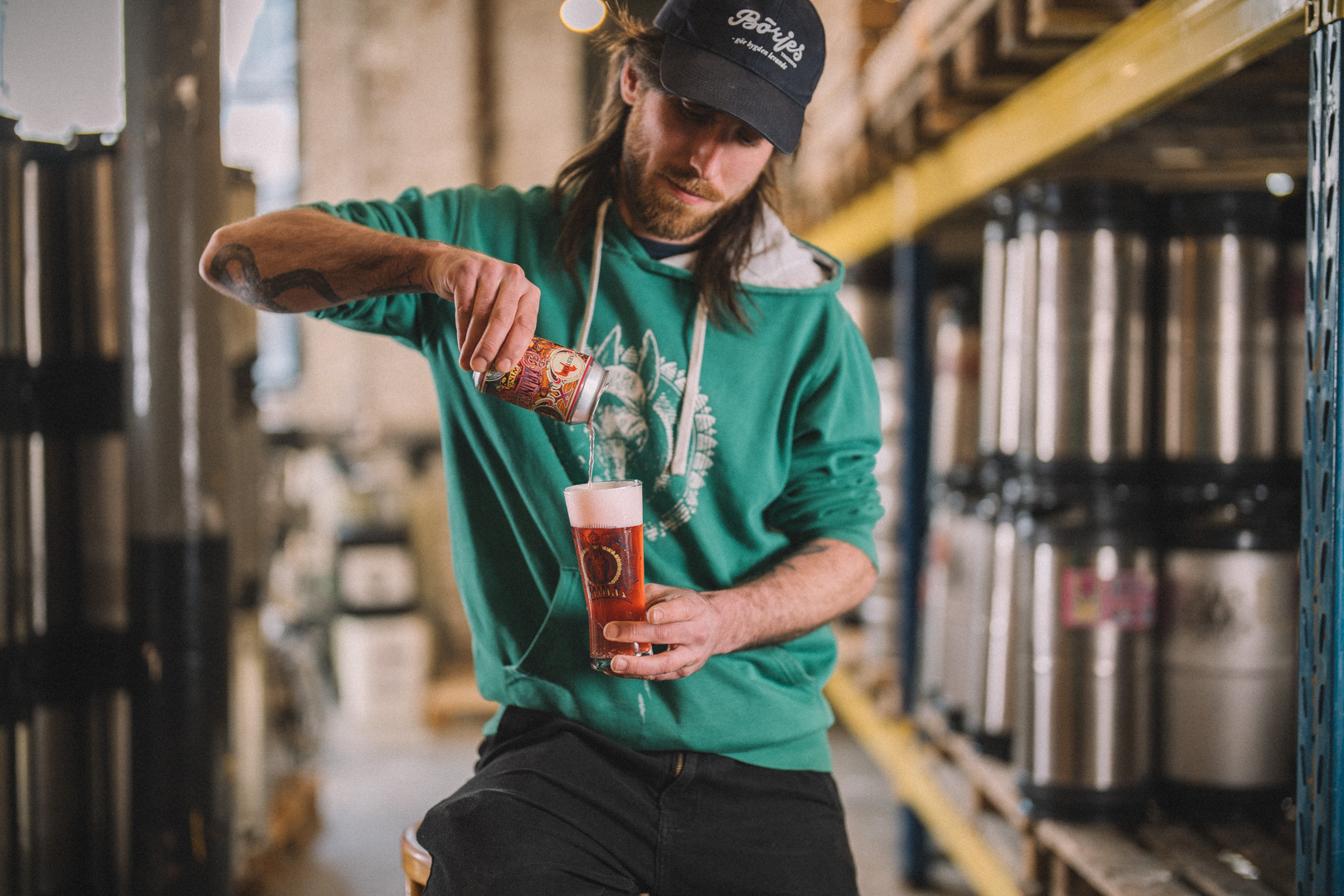
II.
Mother’s Milk
Jöel Galy is Swedish born but Brussels raised. He speaks Swedish, and still regularly visits his grandfather’s wooden cabin in the forested area of Småland in Sweden’s south-east. Galy’s father was a French wine importer from Perpignan, and his mother was, in addition to being a trained biochemist, in the vanguard of the Swedish homebrewing movement before she moved with an infant Galy to Brussels.
Sweden, like its next door neighbour Norway, has a notoriously censorious attitude to alcohol sales. Supermarkets are only allowed to sell Folköl, “People’s beer”, with a maximum alcohol content of 3.5% ABV. Until Sweden joined the EU in 1995, the strength of Starköl (“strong beer”) sold in the state monopoly alcohol stores was capped at 5.6%. Homebrewing was a way around these restrictions for people who wanted to drink stronger beers, and Galy’s mother helped found the Swedish association of homebrewers. “Most of her brewing was done largely before I was born, and after I moved out when I was older,” Galy says, though he remembers his childhood home having plenty of homebrewing equipment lying around.
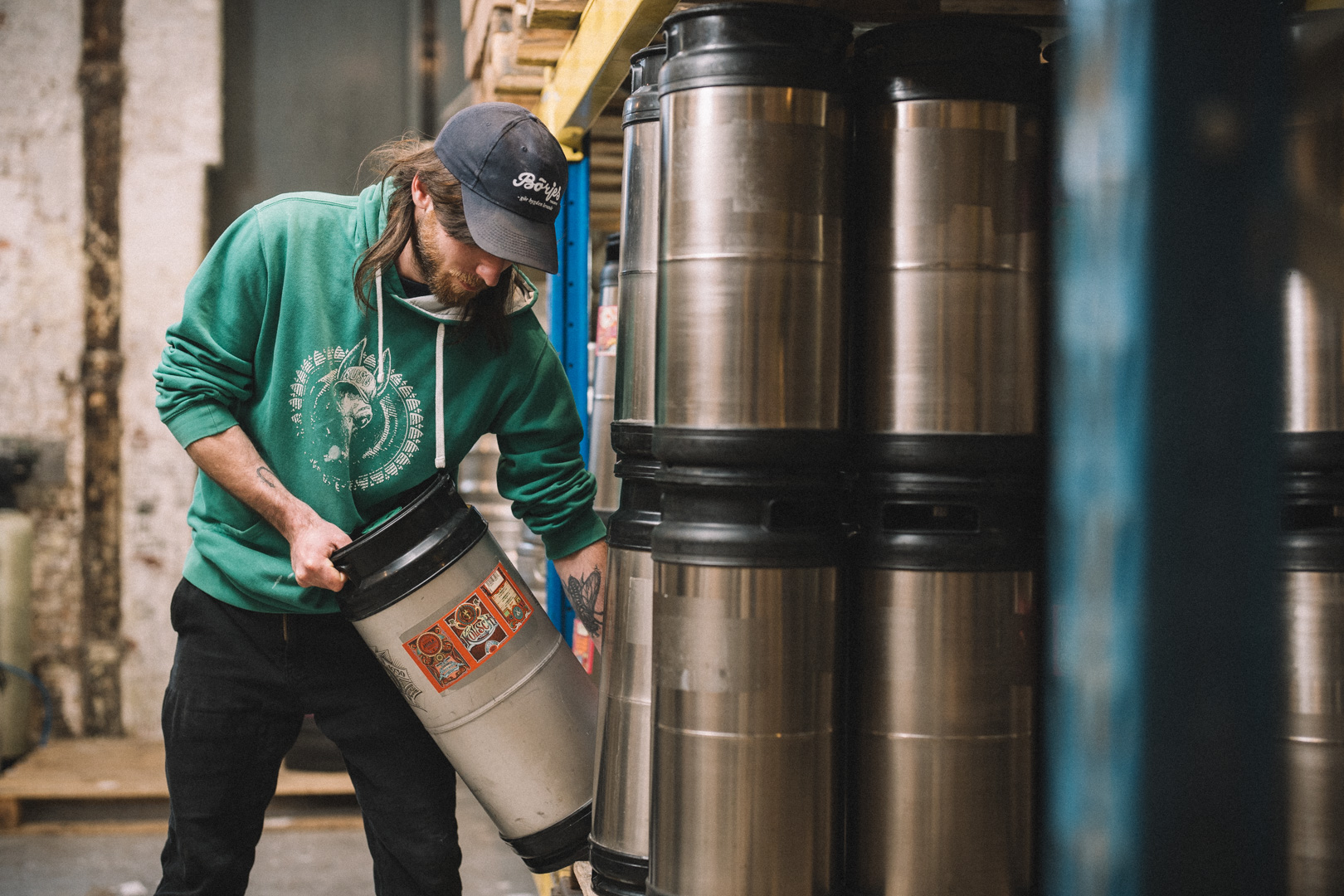
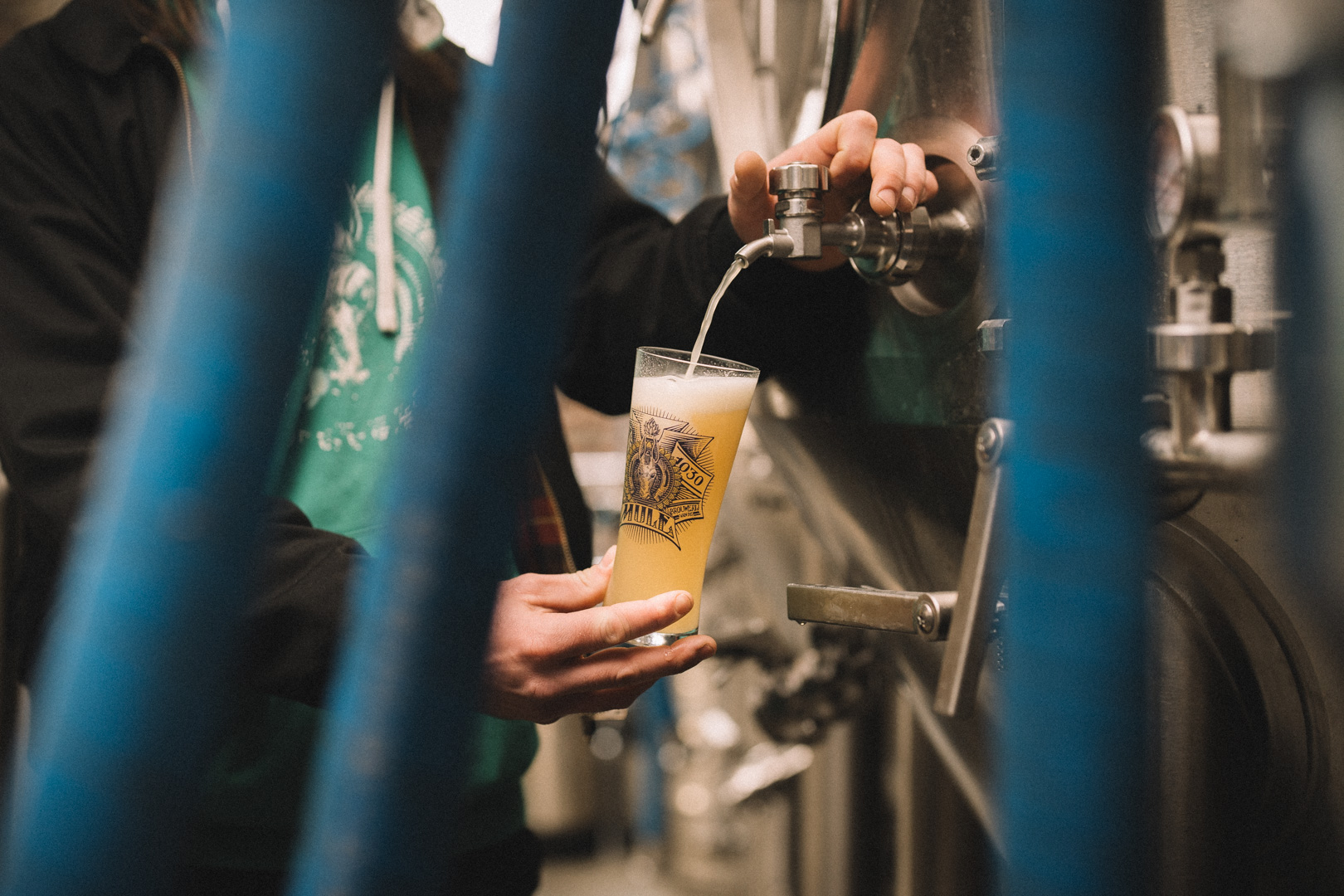
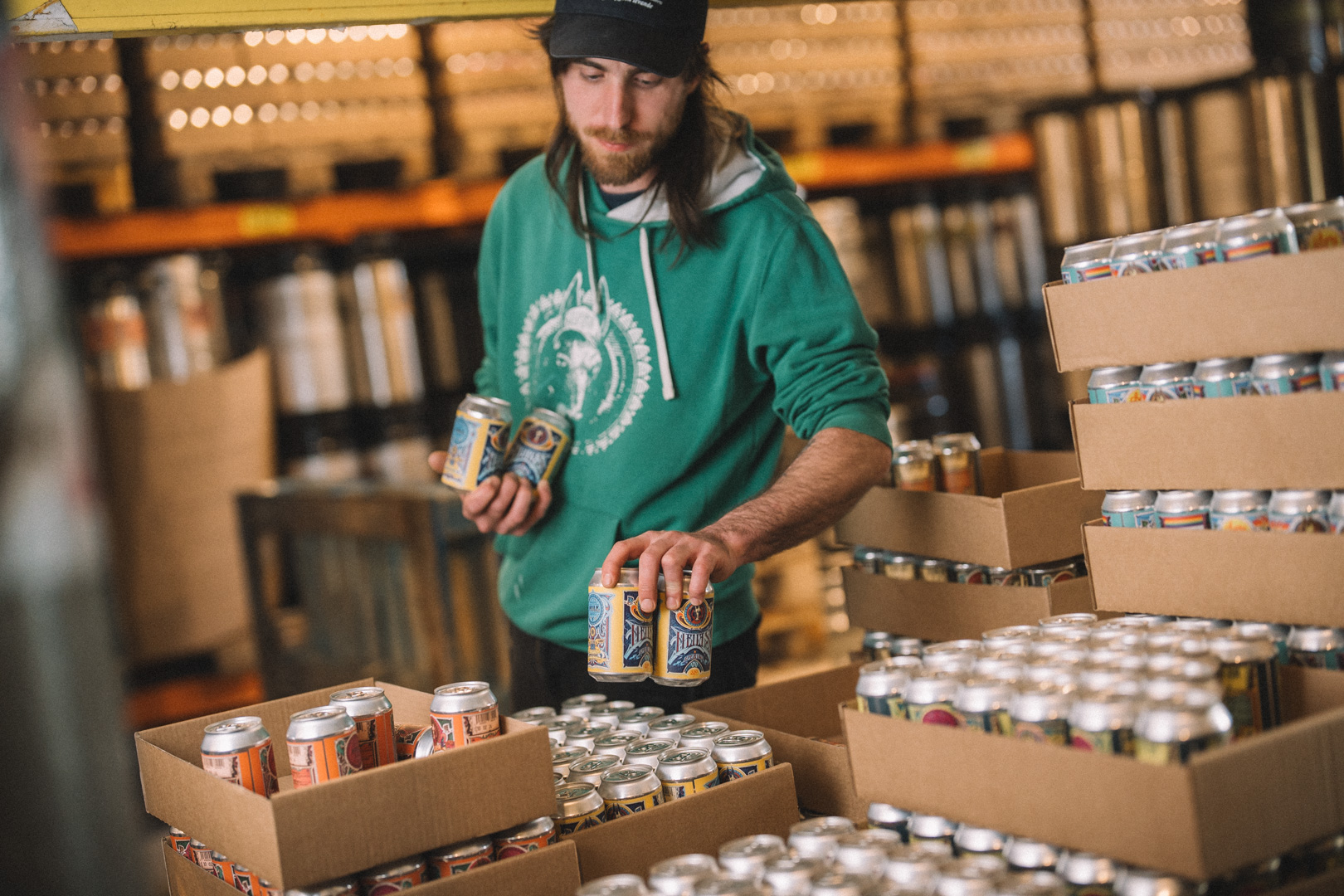
Despite this maternal influence, Galy’s teenage tastes leaned to the cheap and cheerful as a teenager. “My first beer was probably a shitty can of Jupiler,” he admits, probably drunk while he immersed himself in Brussels’ hardcore and punk scenes that centred around the city’s squatter community. “School didn’t really work for me or I didn’t really work with school,” Galy says, but he didn’t let that get in his way, and began working in hospitality as soon as he had finished.
It was then, in the course of long bar shifts, that his latent interest in beer and brewing was reawakened by exposure to beers from Brasserie de la Senne, Brouwerij De Ranke and other breweries leading Belgium’s brewing revival in the 2000s. Serving the beers wasn’t enough for him, and with his mother’s homebrewing history in the back of his mind, Galy wanted to know more: “I wanted to go further upstream, closer to the source.”
III.
School of Hard Knocks
At that time in Brussels, in the early 2010s, there were only two places where you could touch a commercial brewing system. Brasserie Cantillon, run by the Van Roy family and making Lambic, Brussels’ indigenous, spontaneously-fermented beer style. And Brasserie de la Senne, founded by Bruxellois pair Bernard Lebouq and Yvan De Baets in 2002. The pair had recently returned their brewing activities to the city after a nomadic existence brewing their beers—Zinnebir, Taras Boulba, Jambe de Bois—on other people’s equipment while building up enough money to open their own facility in Molenbeek in 2010.
By 2014, when he knocked on Brasserie de la Senne’s front door looking for a job, Galy the bartender knew their work well. “I [also] knew they were short-staffed, but that they couldn’t afford to hire anyone,” he says. There was another snag too. He wasn’t a brewer. “I think I’d only homebrewed maybe 20 times in my life.”
De Baets remembers Galy’s arrival at the brewery, showing up uninvited with a client of the brewery—whose daughter Galy happened to be dating. They had a chat, a deal was reached, and a month-long traineeship for Galy became three months, which became a permanent position. “He [brought] a very positive energy,” says De Baets, curiosity and drive compensating for Galy’s lack of technical background. “He is [also] serious. When you brew, you should be extremely focussed. He had those qualities.”
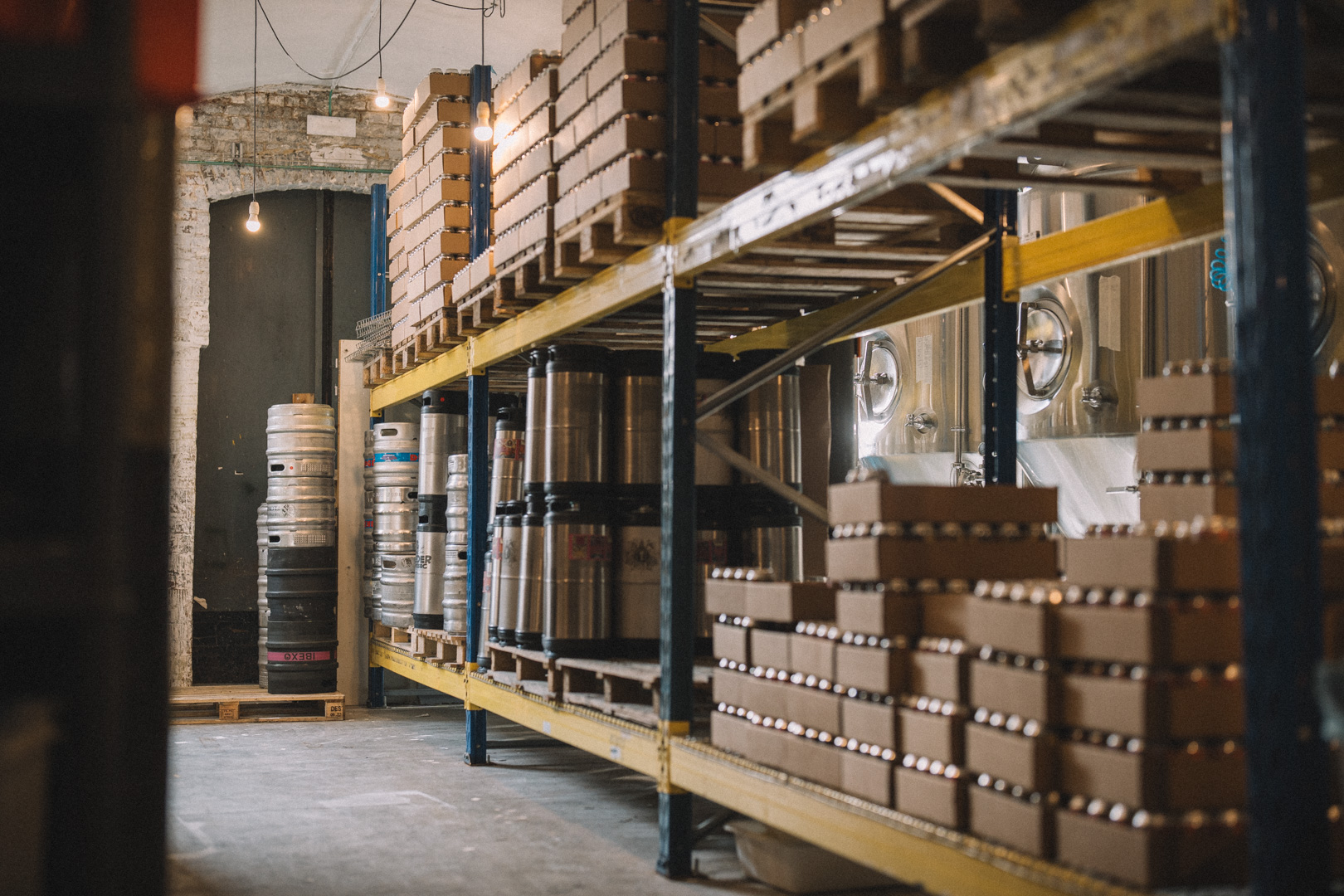
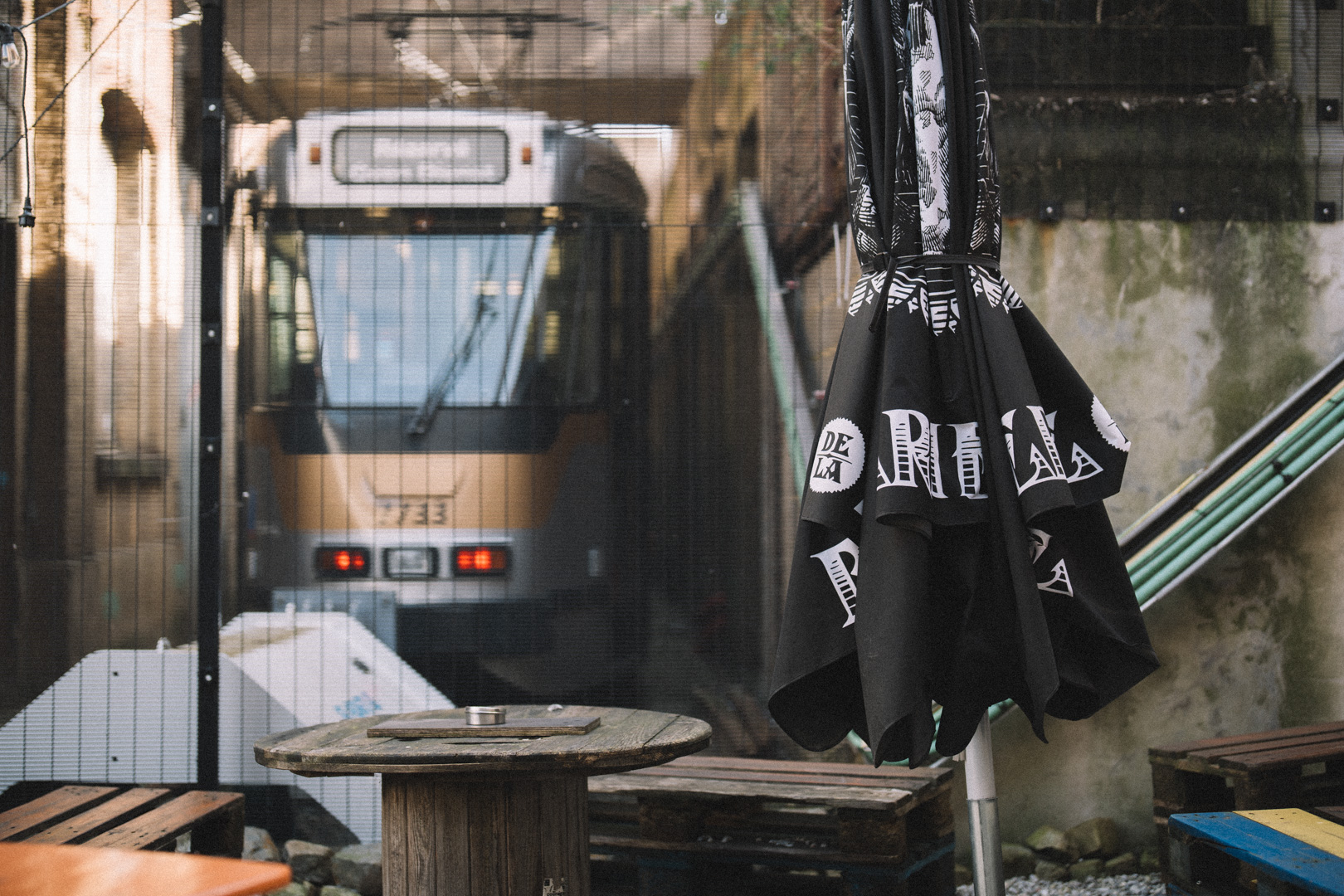

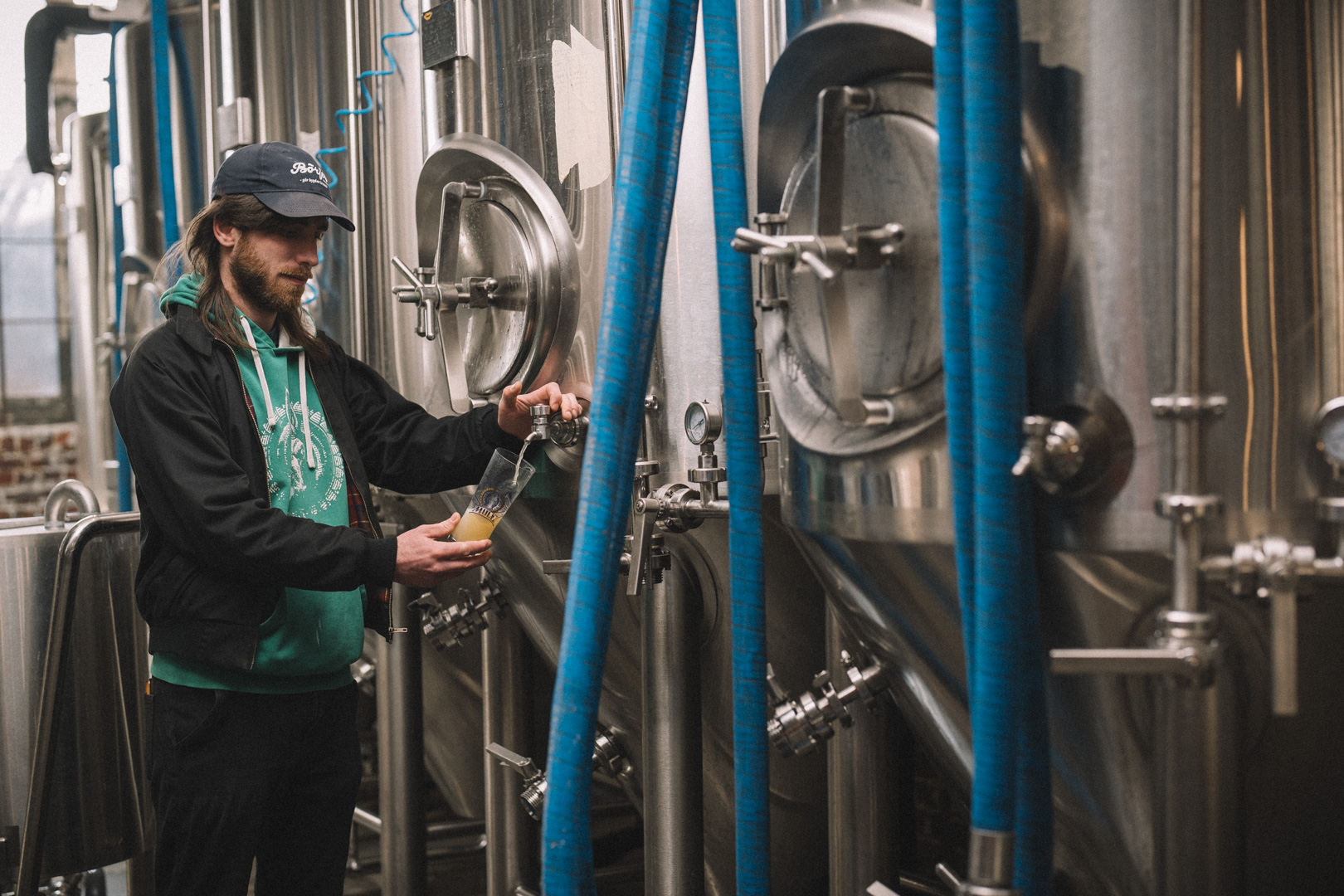
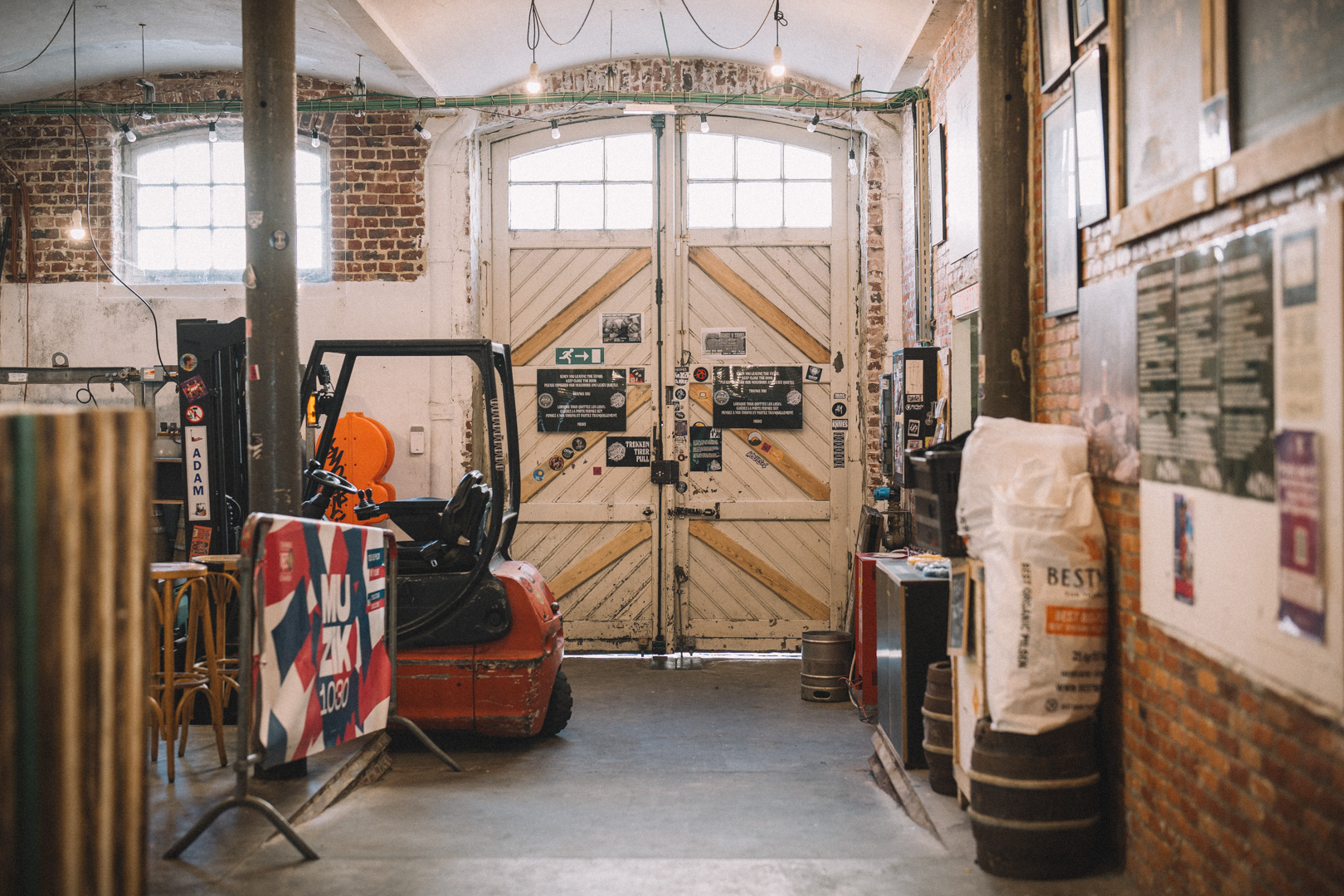
Zinnebir was Galy’s first solo brew, and soon he was helping to design recipes, programming the brew schedule, choosing raw materials, and representing the brewery at festivals in Belgium and abroad. It was as good a brewer’s finishing school as he could hope for, and Galy eagerly absorbed de la Senne’s ethos. “What did I learn at de la Senne? Respect for authenticity,” Galy says. “The [importance of] the quality of the raw materials, and letting them speak for themselves. And the importance of balance in a beer.”
He also admired the brewery’s visual identity, in a culture that was still agnostic about, even hostile to, branding. Brasserie de la Senne worked almost from the beginning with Leboucq’s cousin, comics illustrator and teacher Jean Goovaerts, developing an immediately recognisable house style centred on bright colours and Brussels iconography filtered through a range of influences from Russian suprematism to Art Deco and Ukrainian folk tales.
There were fat years for De la Senne, growing production some years by 30% as new clients discovered their beers and dropped into the brewery to pick up crates and kegs for their bars. Galy often hung around at the end of a shift for a chat, getting to know these customers. Jean-Yves Horn, universally known in Brussels hospitality circles as Jyve, was one such regular. But before he became one third of the Brasserie de la Mule triumvirate, he was working at a bar a couple of kilometres away in Jette, calling in for kegs of Zinnebir and Taras Boulba before the weekend rush, and stopping for a beer with the brewery team. “Petit á petit, we became friends,” he says. “I think it’s complicated to be Joël’s enemy.”
IV.
Magasin 4
Born in Brussels, Jean-Yves Horn’s parents uprooted him as a child and moved to rural Belgium. The teenage Horn spent his formative years plotting his homecoming to the capital city. “As soon as I could get a car, I was [back] in Brussels,” he says, returning after high school to study to become a chef. A series of bar jobs followed before he was given the reins of a neighbourhood student pub near the Jette train station in suburban Brussels.
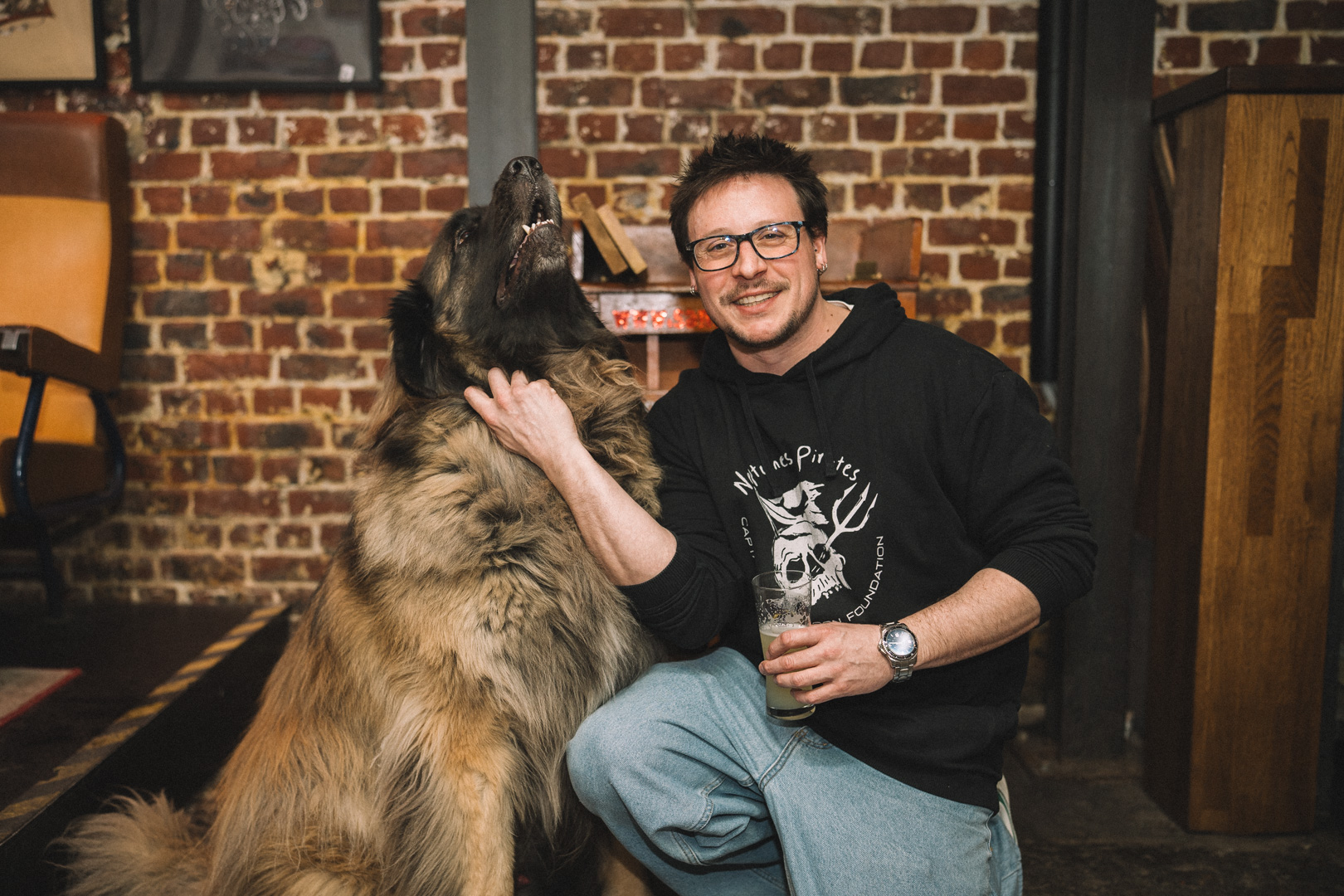
“The Gele Poraa was sad and bad in those days,” he says of the bar he started managing in the early 2010s. Horn did everything at the Gele—cleaning, opening, closing, community management, police liaison: “When you’ve worked there, you can work anywhere.”
Beer, Horn decided, would be key to his plan to revive the bar. He started local, stocking Cantillon and de la Senne in the bar’s tiny cellar, and then plugging into Brussels’ embryonic brewing resurgence—hosting events for the new wave of Brussels breweries, including En Stoemelings, L’Ermitage, and La Source. “When the going was good, I had more than 108 different beers” on the menu, he says. “I had a lot of beer and a very small fridge, so I had a lot of turnover to do.” Which meant regular trips around Brussels to buy beer.

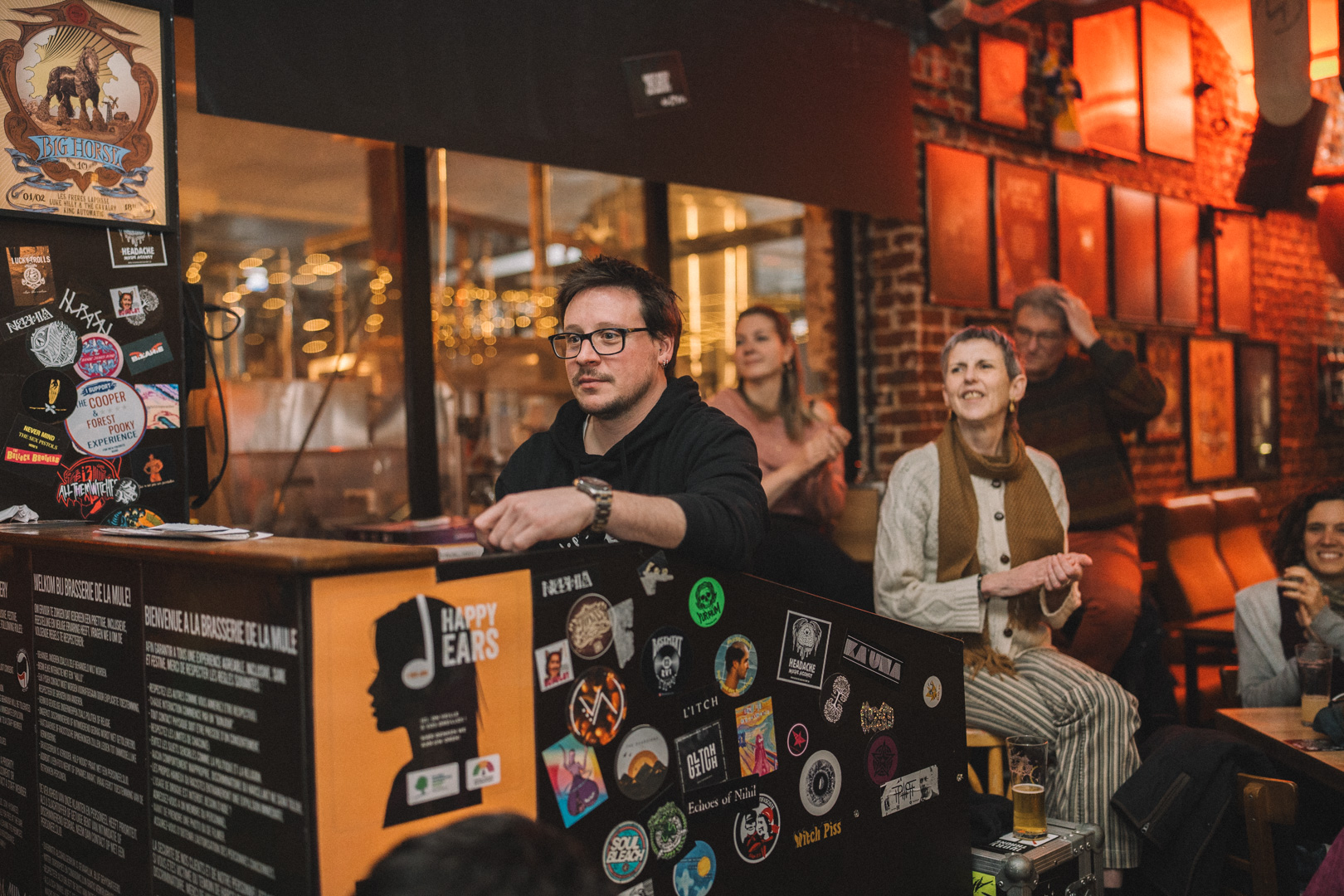
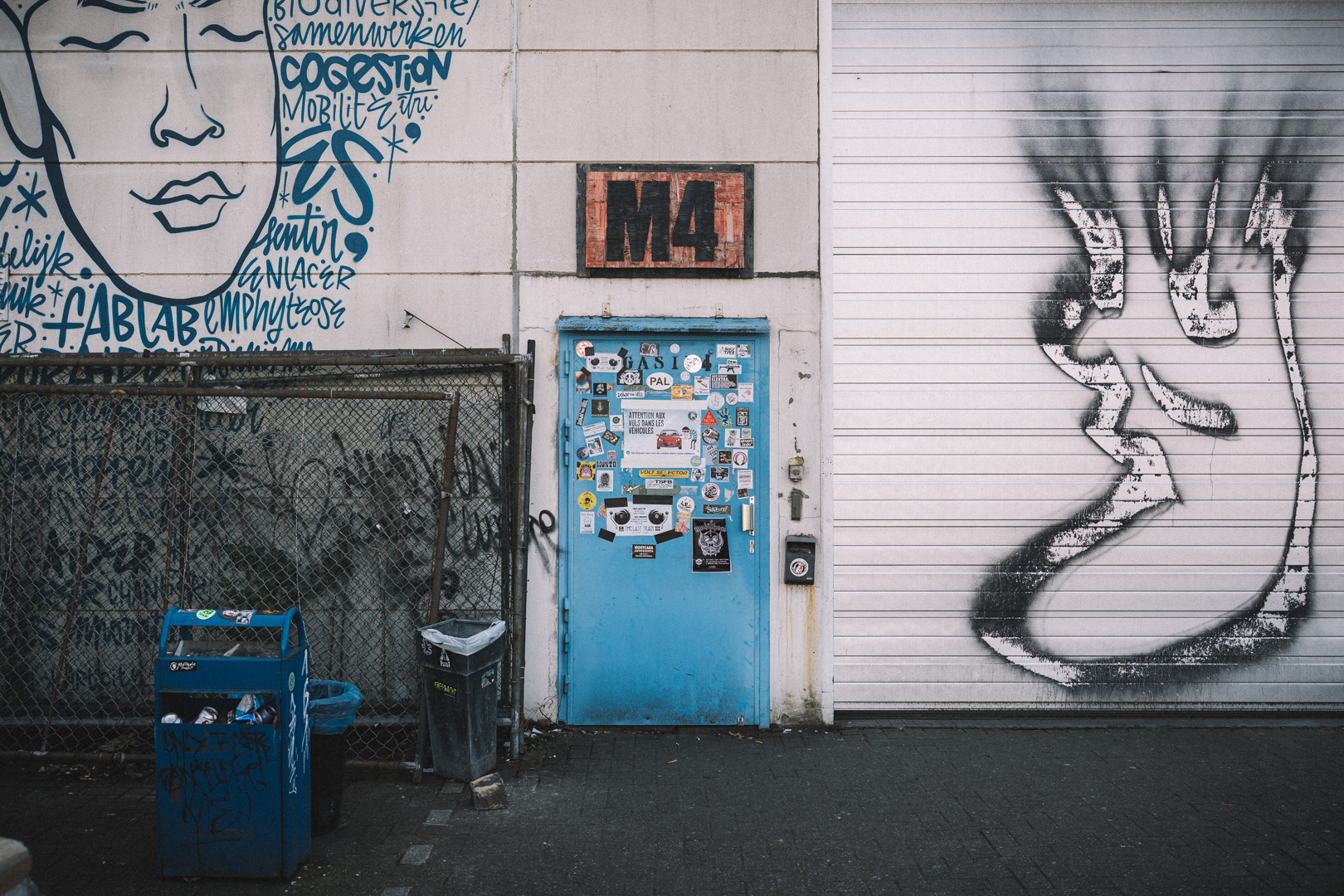
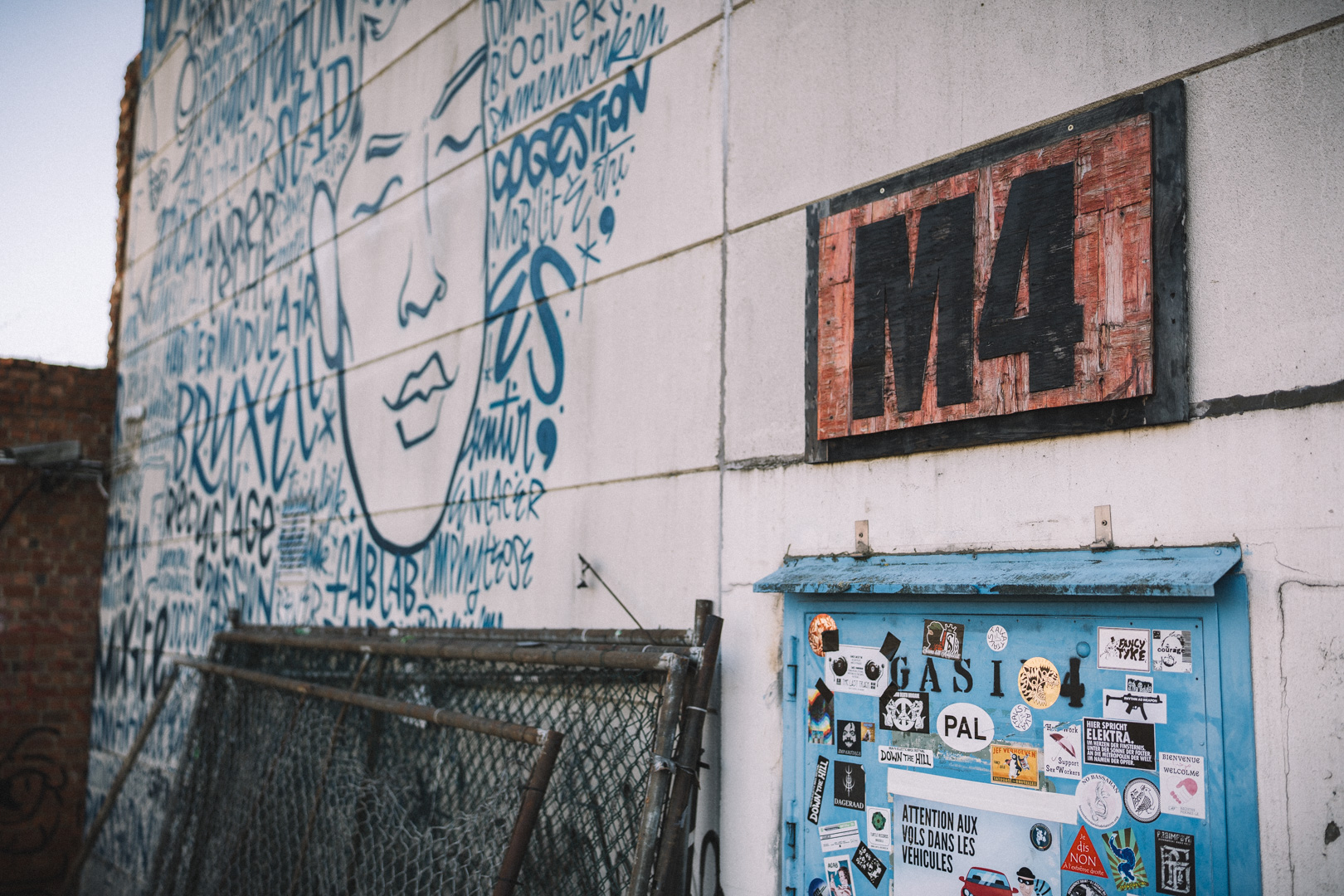
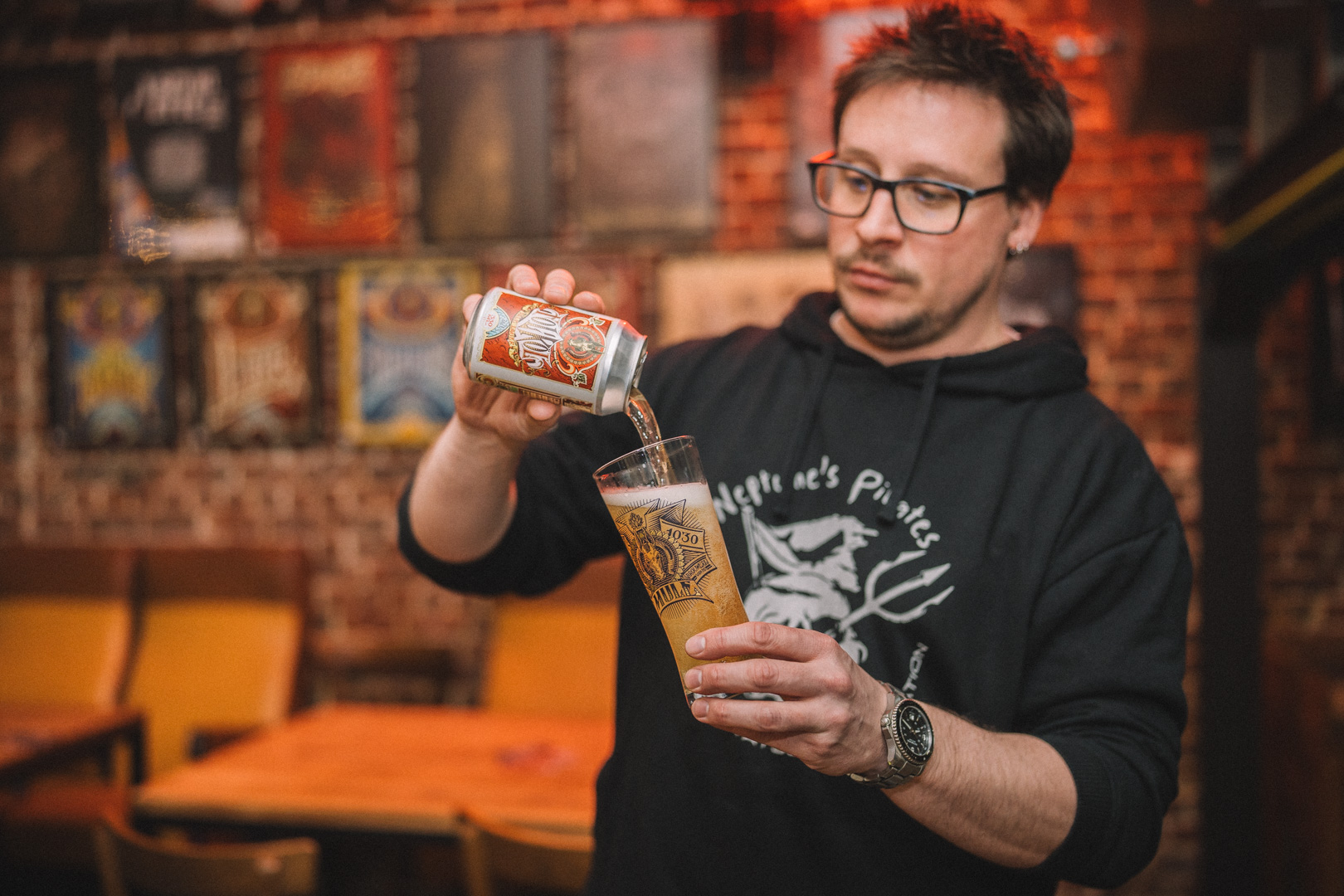
Enter Galy, and sessions in de la Senne’s draughty brewery bar bonding over their shared musical interests—Horn was big into metal and punk, and was frustrated that the Gele was too small to really host proper gigs.
The pair were both patrons—Galy was also a volunteer—of Brussels’ alternative music venue Magasin 4 which overlapped with the same anarchic, counter-cultural crowd out of which Brasserie de la Senne had emerged a decade previously. The concert hall attracted a subset of people from the beer industry—Galy and Horn, but also people like Antoine Pierson, who opened the Malt Attacks beer shop in 2014 in Sint Gillis; and Maxime Dumay, who launched Brasserie No Science in 2016 in Laken.
Dumay was a volunteer at Magasin 4 and regularly dragged along a friend of his to concerts, a French illustrator called Ammo, a relatively recent arrival in Brussels who was falling in love with the city’s beer scene—and was about to become the third leg of the La Mule stool.
V.
Quick Draw
Before moving to Brussels in 2009, Gascony native Amaury Dastarac—A.K.A Ammo—was living in Bordeaux designing gig posters for the local hardcore, punk, and heavy metal scene while working on personal comic book projects in his spare time.
From a family of artists, he’d always had a pencil in his hand. His highly detailed music artwork was hand-drawn with a mechanical pencil and reflected the influence of Japanese manga, English comic artists like Dave Mackin and Simon Beasley, and the dense, heavily detailed wood-engravings of biblical scenes featuring crucifixions, avenging angels, and dramatic skies of 19th century French artist Gustave Doré.
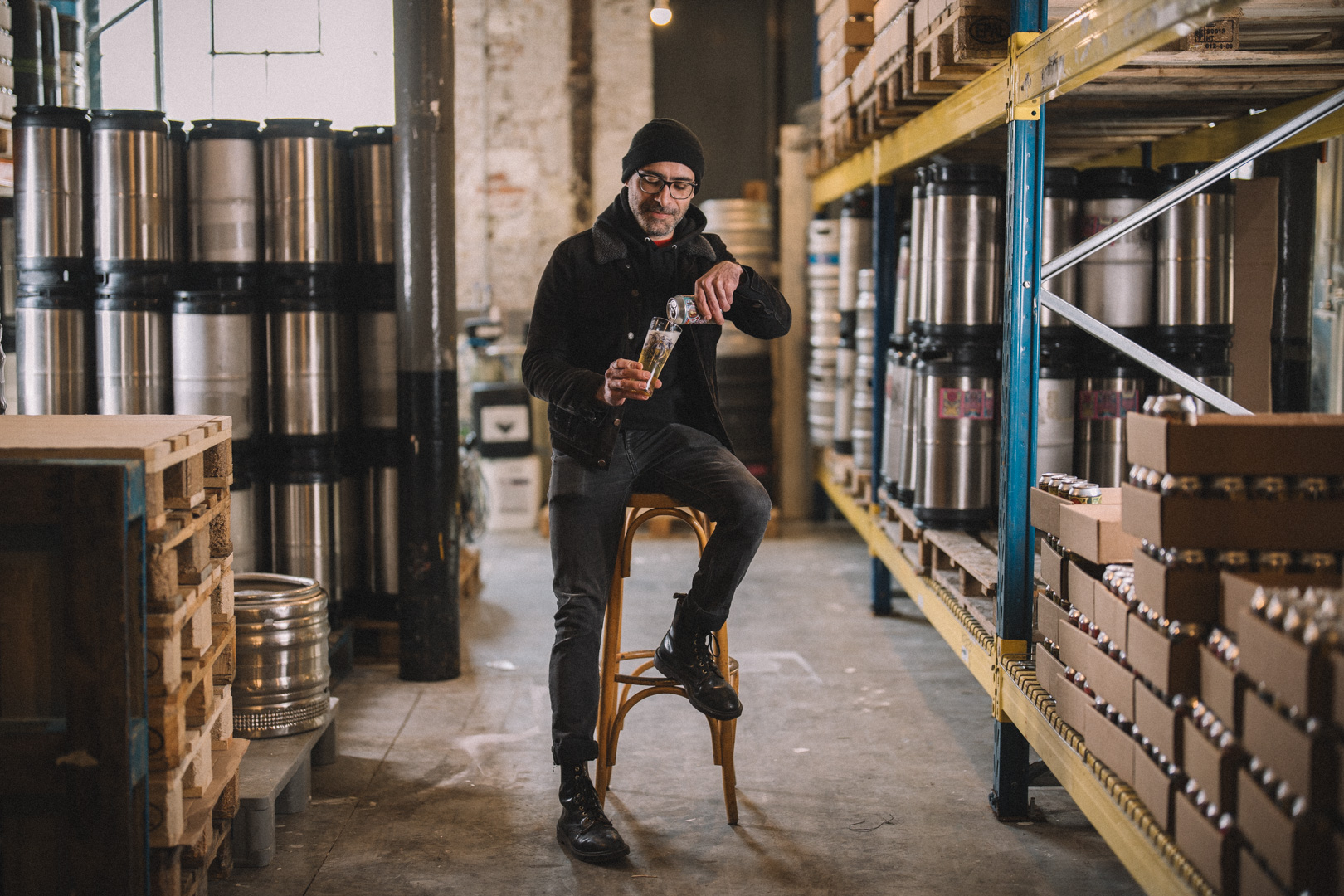
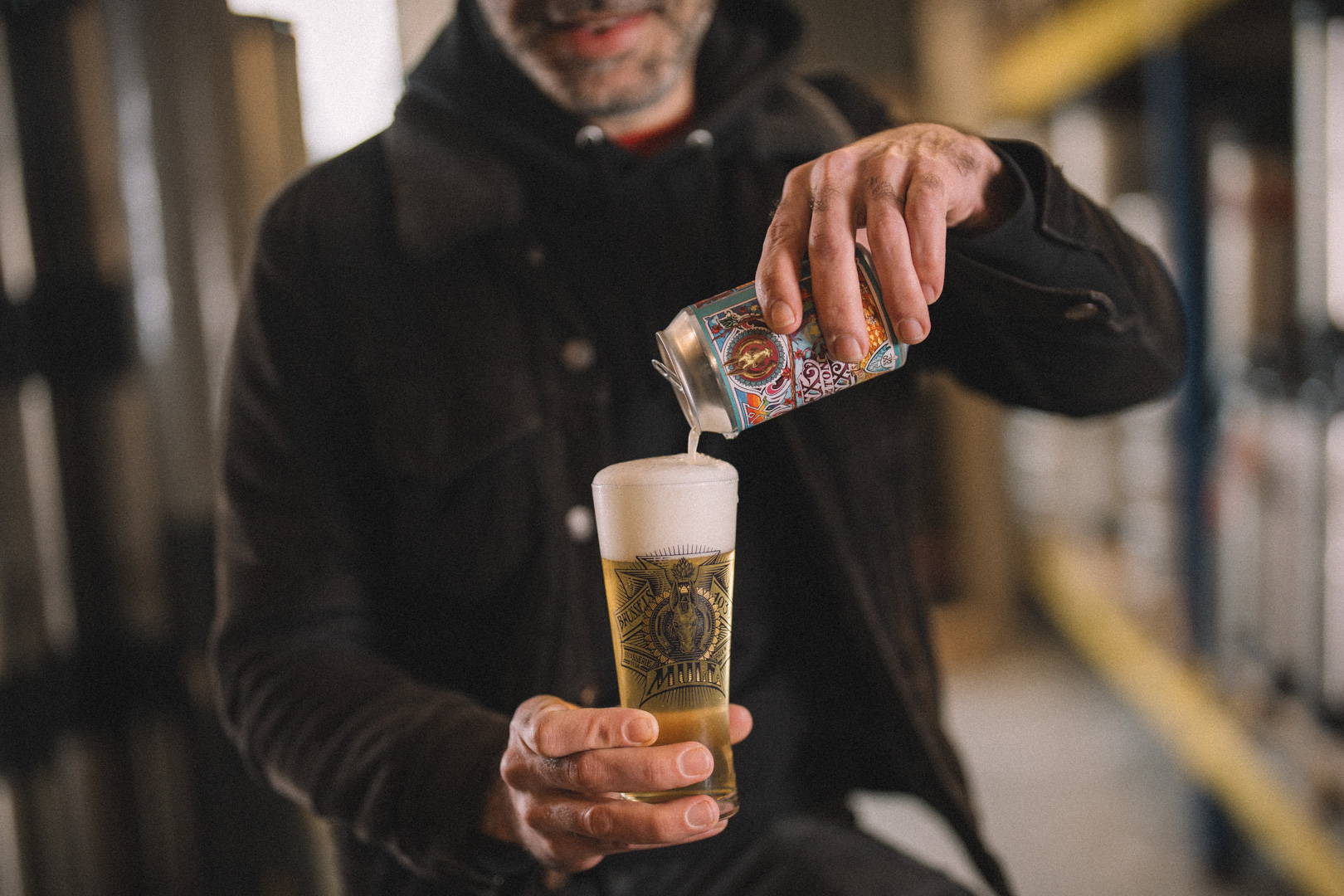
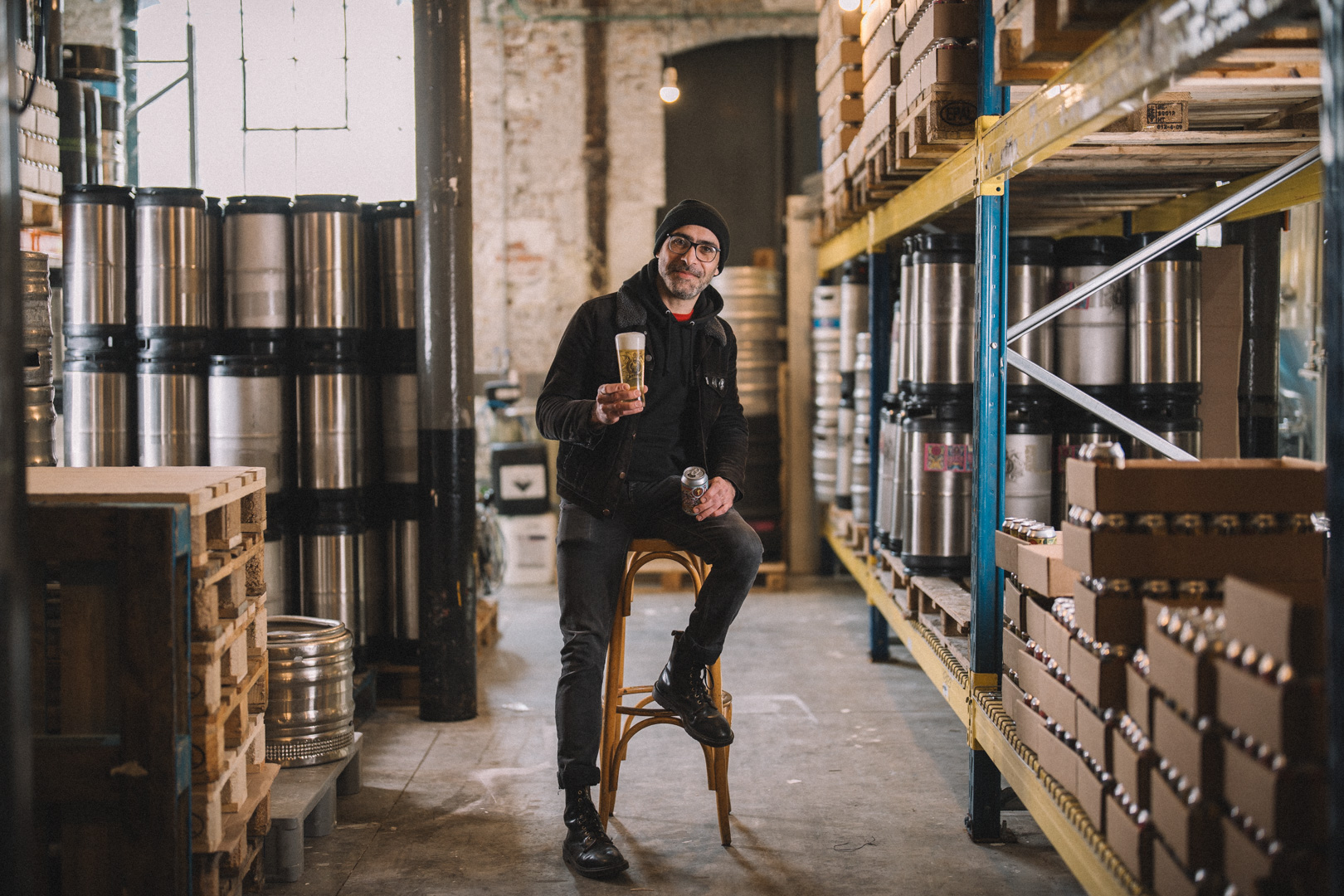
Despite knowing little about Brussels, a chance visit to the city in 2009 convinced Ammo to move. He was drawn by the good food, the good beer, and good music venues. Brussels’ proximity to Germany, England, and the Netherlands meant there was plenty of work going designing posters for touring bands and music venues. It wasn’t long after his arrival that Ammo began illustrating posters for Magasin 4, where he met Maxime Dumay and others in Brussels’ small beer community.
Announcing, several years later, his intention to open a brewery across the road from Magasin 4, Dumay wanted his Brasserie No Science to share the venue’s aesthetic, recruiting a stable of illustrators of which Ammo was one. “At this period it was only de la Senne with a strong, coherent, and cool design,” Ammo says. “But Max came to me and he said, ‘I like your work, draw something. It’s going to be heavy… a porter, it will be dark.’ [So] I leant into a heavy metal typographical influence.”
The result was No Science’s Heavy Porter, released in October 2016 and Ammo’s first beer label. More labels followed for No Science, and Ammo’s work eventually drew the attention of both Brouwerij De Ranke and Cantillon, who hired the illustrator to design labels for limited-release beers before going on to unleash Ammo on redefining their established brands. Ammo enjoyed creating beer labels for Cantillon, De Ranke, and others, but suffered from a nagging idea that it might be more fun to get in with a brewery at the ground floor, helping them to design their identity from first principles.
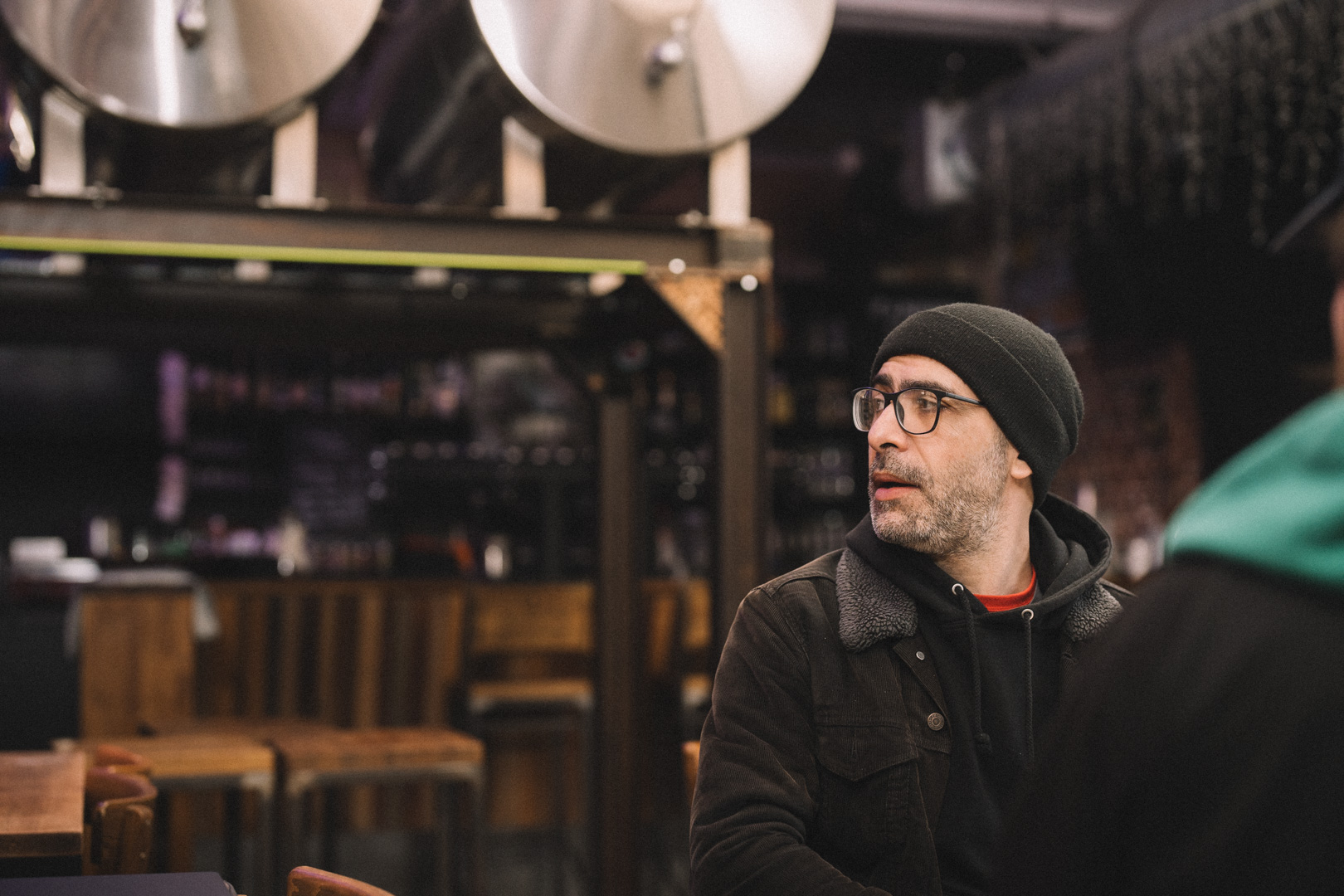
Galy and Ammo would frequently cross paths around this time, at Magasin 4 or at the Moeder Lambic bar in St Gilles. Galy would often call up the Frenchman to join him in Molenbeek for a post-brew day beer. Or on occasion, beers.
Ammo remembers one particular session, in the late summer of 2018. Galy was in luck; Ammo’s family was out of town, so he was free from the early afternoon. First came beers at the brewery, then a squat party and a late-night gig, after which Ammo was bundled into a cab and home to bed, remembering little of their exertions when he woke up the next morning. Except he did remember one thing Galy had said to him. The brewer had decided it was time to strike out on his own, and Ammo was going to be the man behind this new brewery’s look.
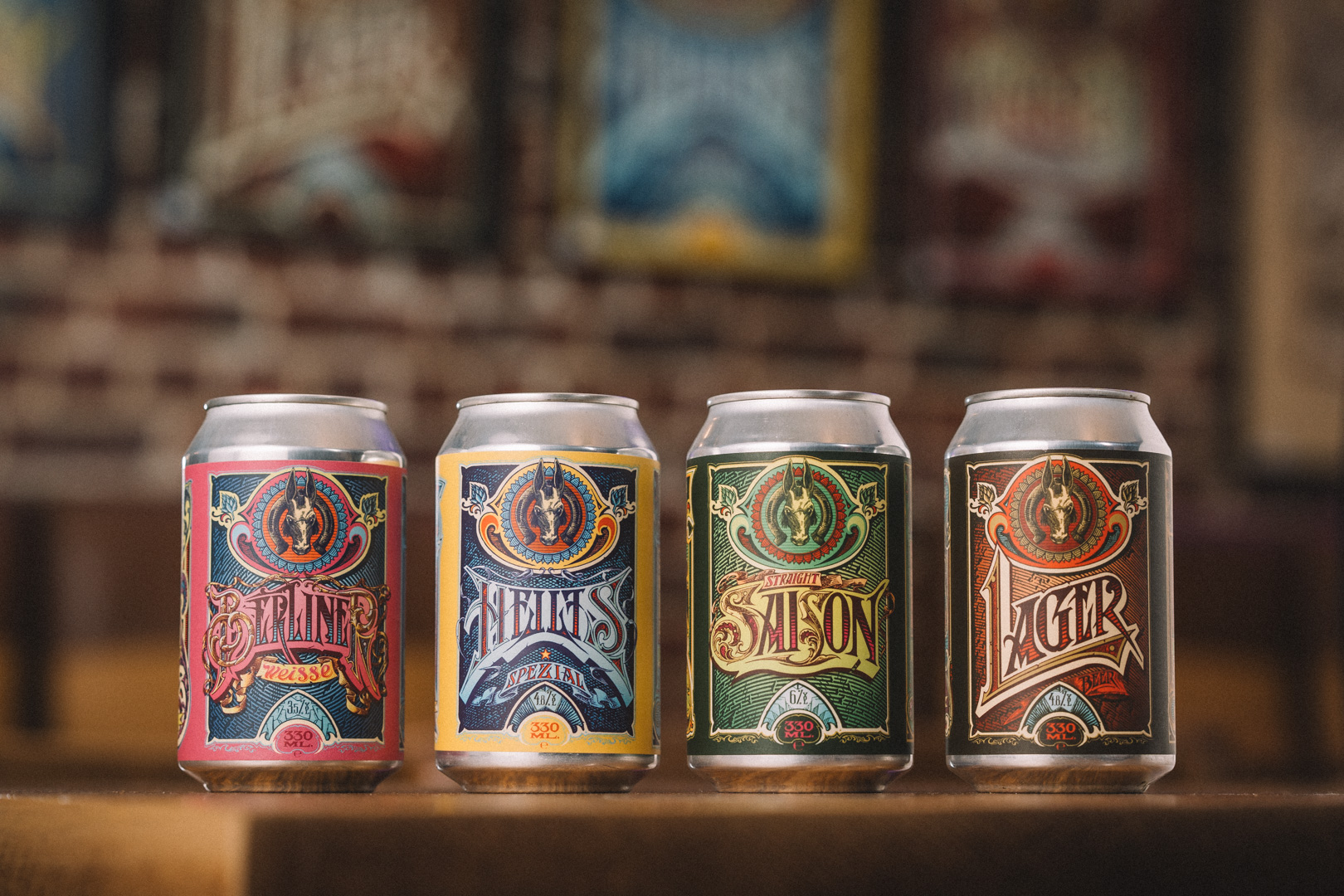
VI.
Life During Wartime
Galy had been ruminating about a solo endeavour for some time. In 2016 Brasserie de la Senne had announced plans to build a larger, purpose-built facility close to Magasin 4 at the Tour & Taxis complex. As the skeleton of the new building began to emerge in early 2018, Galy had come to a realisation: he wasn’t going to join his colleagues on their new adventure. The new brewery would be more automated, less hands-on. “I’m a tactile brewer. I like to be able to run in among the tanks, and tweak a knob or pull a handle, to feel connected to the equipment and the process,” he says.
De la Senne’s imminent move meant their Molenbeek site would be lying idle, and Galy spotted his chance. He could take it over, or a part of it at least, opening a brewery that was not just a brewery but a community hub, a neighbourhood brewpub carrying forward de la Senne’s ethos of quality raw materials, authenticity, and a strong visual identity.
Jean-Yves Horn didn’t need much convincing when Galy pitched him the idea, having come to a realisation of his own that he couldn’t continue to grind himself down at the Gele Poraa. After that initial drunken pitch, Ammo was in too. As Brasserie de la Senne prepared to vacate their first Brussels home in Molenbeek, the trio were all set to go. Right up until they weren’t. The idea never moved forward, due to what the trio describe as personal and professional circumstances. None of the three were keen on sharing more details, saying simply that they’d prefer not to rehash the experience. Whatever happened, it forced the trio to go their separate ways.
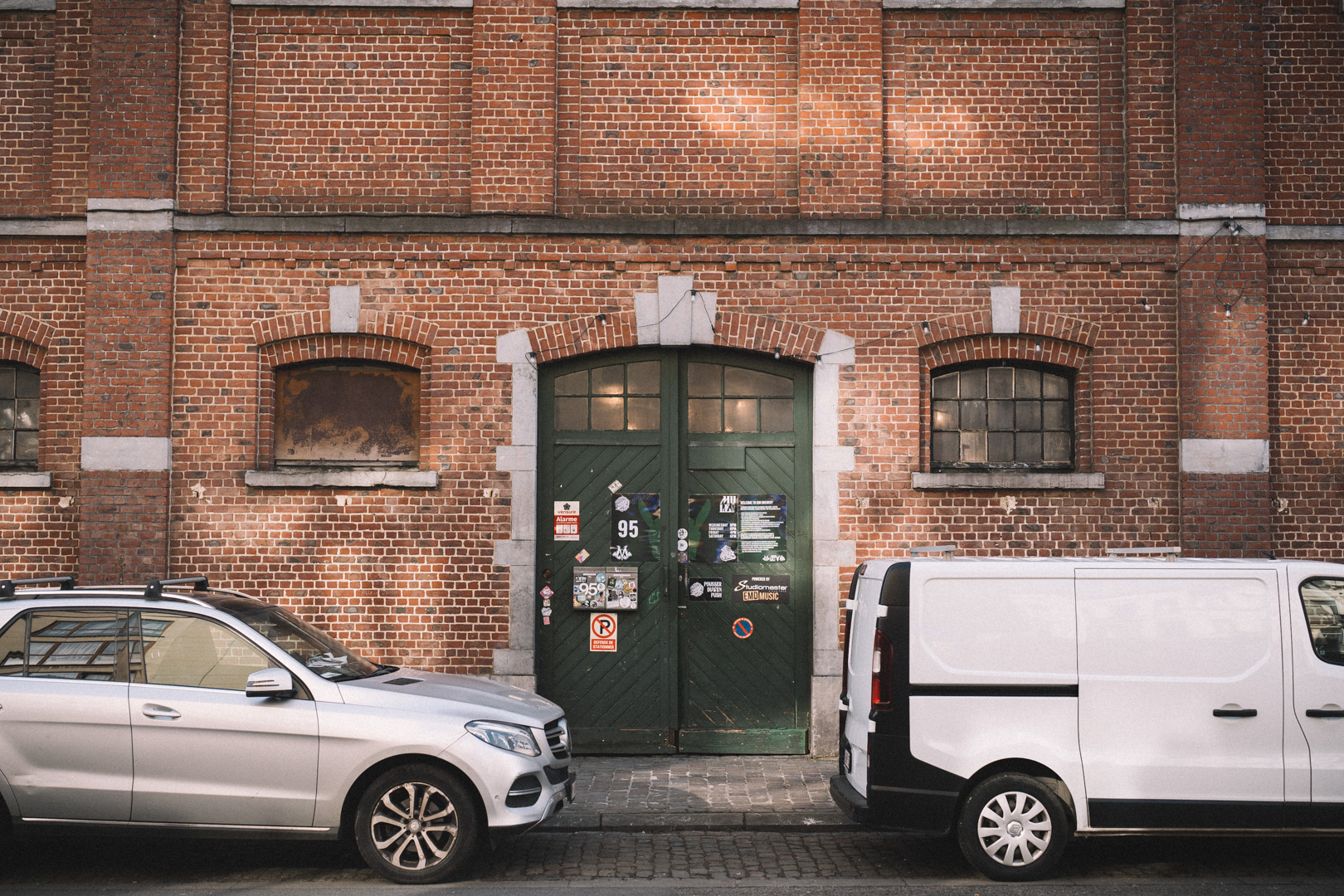
Horn took time off before landing shifts at Cantillon’s bar and a Molenbeek restaurant. Ammo continued his teaching and illustration work while also designing a Belgian beer-themed board game. Galy departed de la Senne in late-2019, and before he did he called on Ammo for one last job.
Galy had convinced De Baets to let him brew a valedictory beer at de la Senne—a German-style Hefeweizen—and to bring Ammo in for the artwork. Released in November 2019, Weisse was Galy’s first professional foray into German beer styles and had a label marrying Ammo’s exuberantly detailed line drawings with de la Senne’s boisterous colour palette. He left for a winter brewing season at Brasserie Cantillon ahead of a planned move in the following Spring to work at a brewery 500km outside Mexico city, on the other side of the planet.
Only Galy never made it to Mexico. In early 2020 the world shut down. Covid-19 overwhelmed northern Europe, with Belgium entering a months-long lockdown and international travel cancelled. Horn got work in a catering kitchen, Ammo’s poster work evaporated, and Galy worked briefly as a postman to make ends meet. It was uncertain when Belgium’s cafés and bars would reopen, threatening the viability of many of the country’s breweries, and what state they would be in if they did. But Galy just couldn’t let go of his dream of a neighbourhood brewery of his own.
One evening, over a beer, Galy told Horn his Mexican adventure wasn’t happening, and Horn mentioned to Galy in passing that his then-girlfriend was working with the owner of a building across town in search of a tenant. It wasn’t long before Ammo’s phone was buzzing. “Joël said, ‘I’ve had a vision’. Okay man, what was it? Did you buy LSD or what?’” Ammo remembers. “We have to work on something. I have a really nice place, where we can dream [big],” Galy told his friend. “Mexico is over.” Something new was coming. And, Ammo asked, did this new “something” already have a name? It did, said Galy: Brasserie de la Mule.
VII.
No Geeks Policy
Joël Galy had spent a lot of time thinking about what form his brewery would take. There would be a hint of his mother’s DIY ethos, but it would also be modern. Compact enough to allow Galy to continue to get his hands dirty, but big enough to host concerts. He had a plan for the beers too. “I’m not interested in brewing hype stuff for beer geeks. I was never a beer geek myself,” Galy says. “I want to brew a beer for the 95% of beer drinkers who just want a Lager or something simple. At a price that’s accessible.” But he wasn’t necessarily thinking Belgian. “I always liked German styles—brewers like Schneider Weisse, Augustiner,” he says. “Clean and careful beers, well made and with respect for tradition.”
The brewery’s line-up wouldn’t be exclusively Teutonic—there would also be Saisons, both straight and more esoteric—but it would lean hard into the German tradition: Helles, Märzen, Kölsch, Berliner Weisse, and other German wheat beer styles.
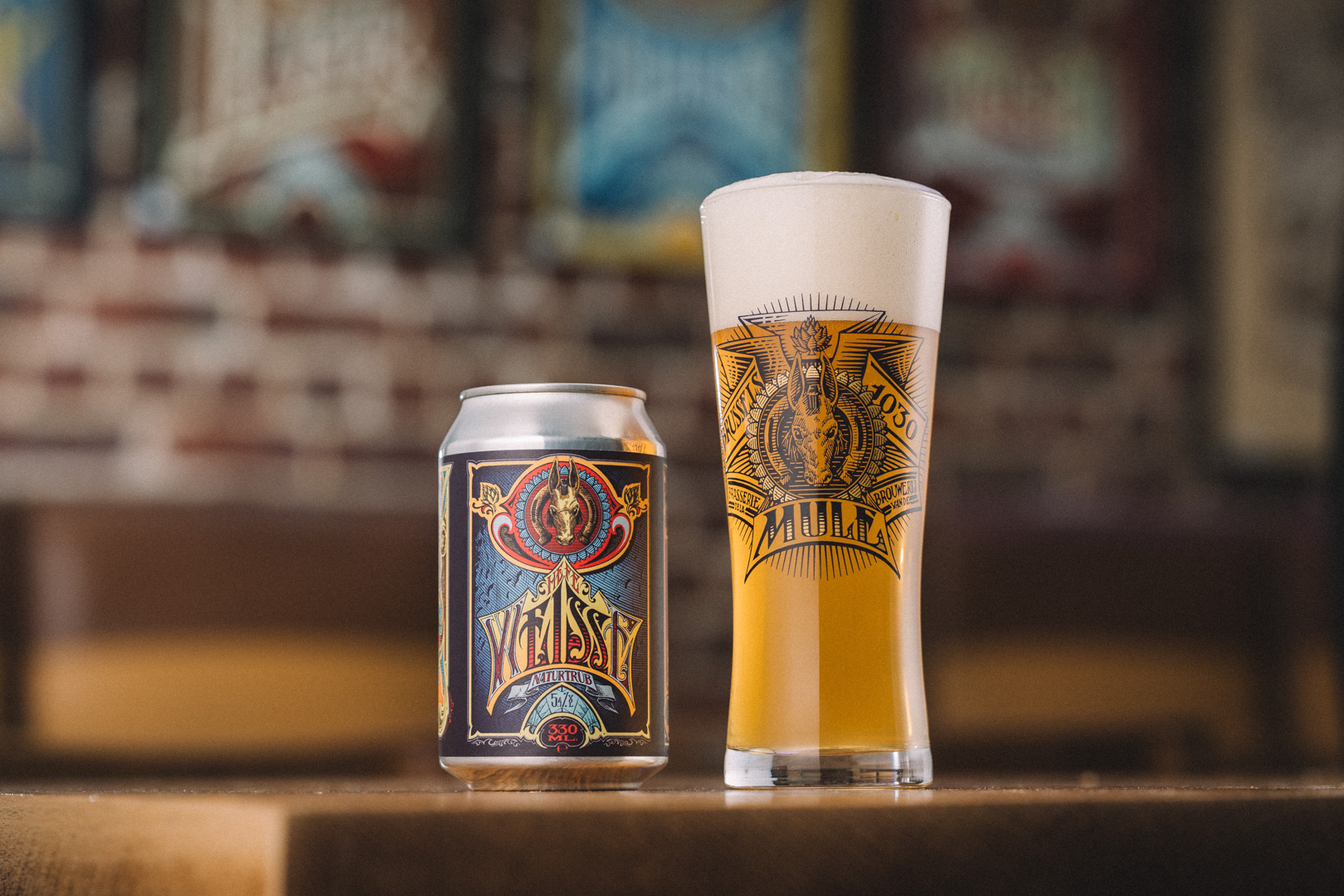
Though it was not a novel idea—Brussels’ interwar industrial breweries were built on the back of Bavarian brewing knowledge and beer styles—some people looked at Galy like he was mad. Others saw a canny business move. “I thought it was very clever actually,” says Cédric Dautinger, co-founder of the Beer.be news website. “If you look back at the history of beer in Brussels…and [the fact that] Lager and Pils are still the most popular styles in the world.”
Galy’s former boss was cheering him on too. “It’s a style I really like. I found him to be very courageous because I think that a lot of the Belgian customers don’t understand German beers,” Yvan De Baets says. “[But it] was interesting for the brewing scene also. Because it was not going to be one of those new breweries [just] making stupid IPAs.”
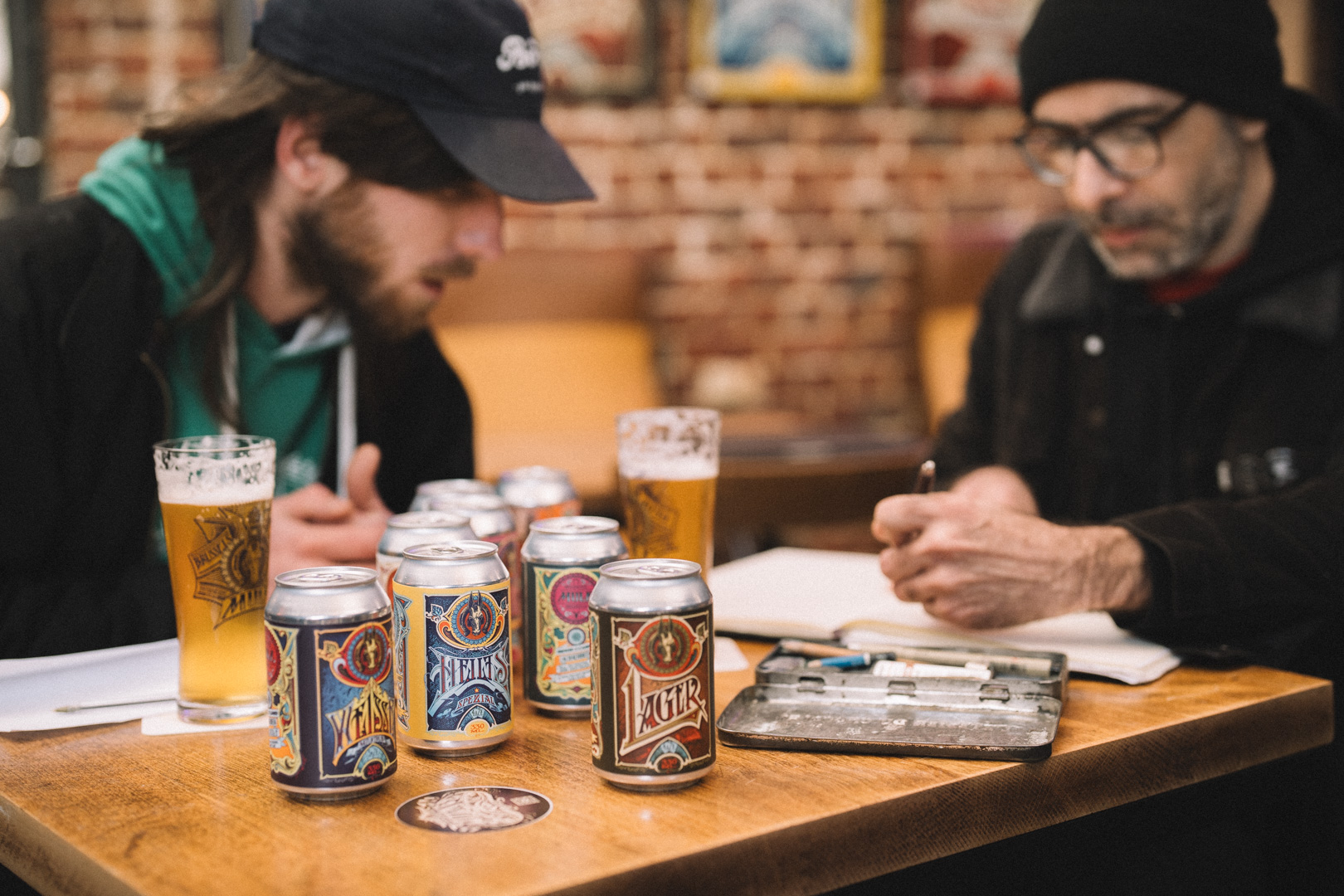
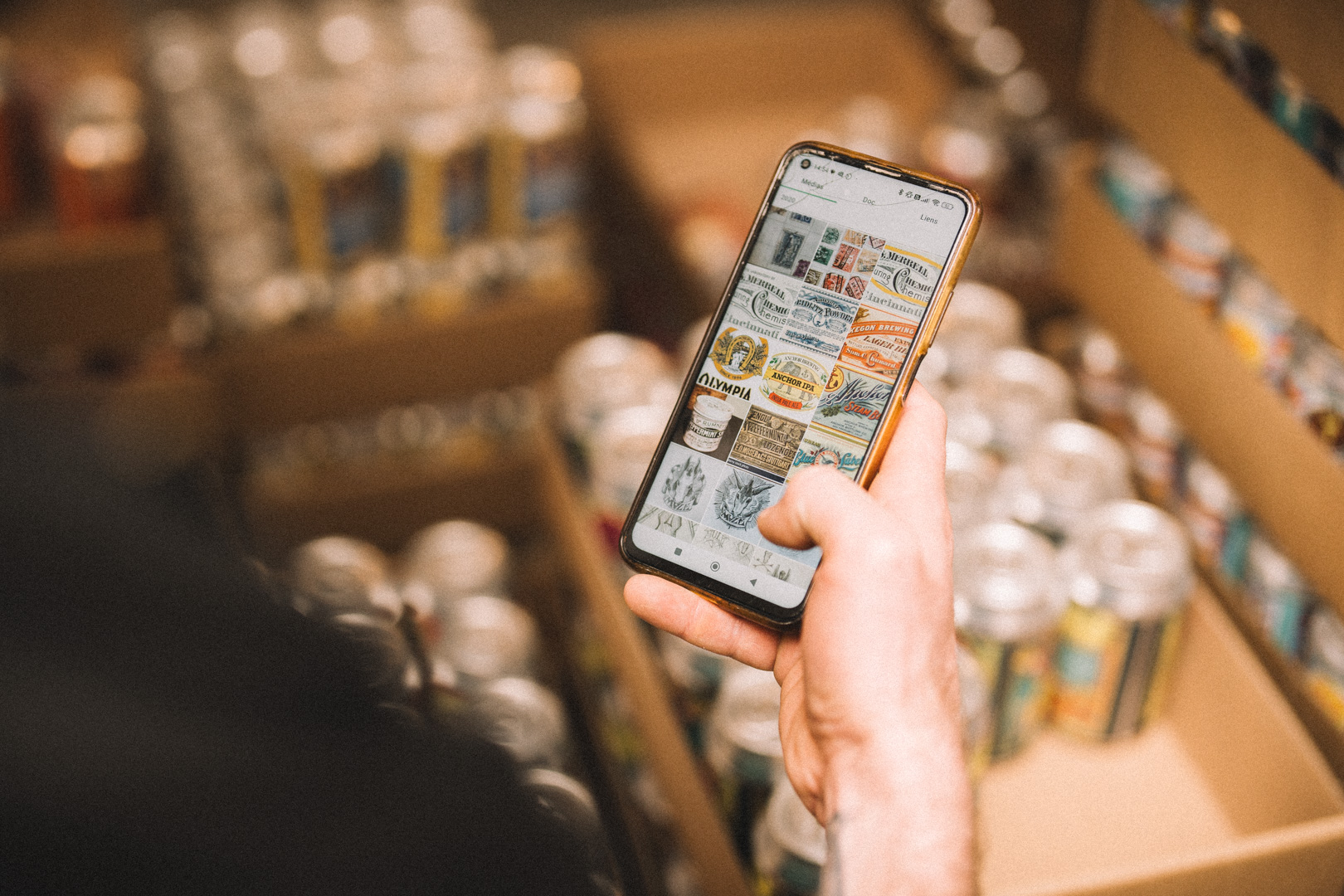
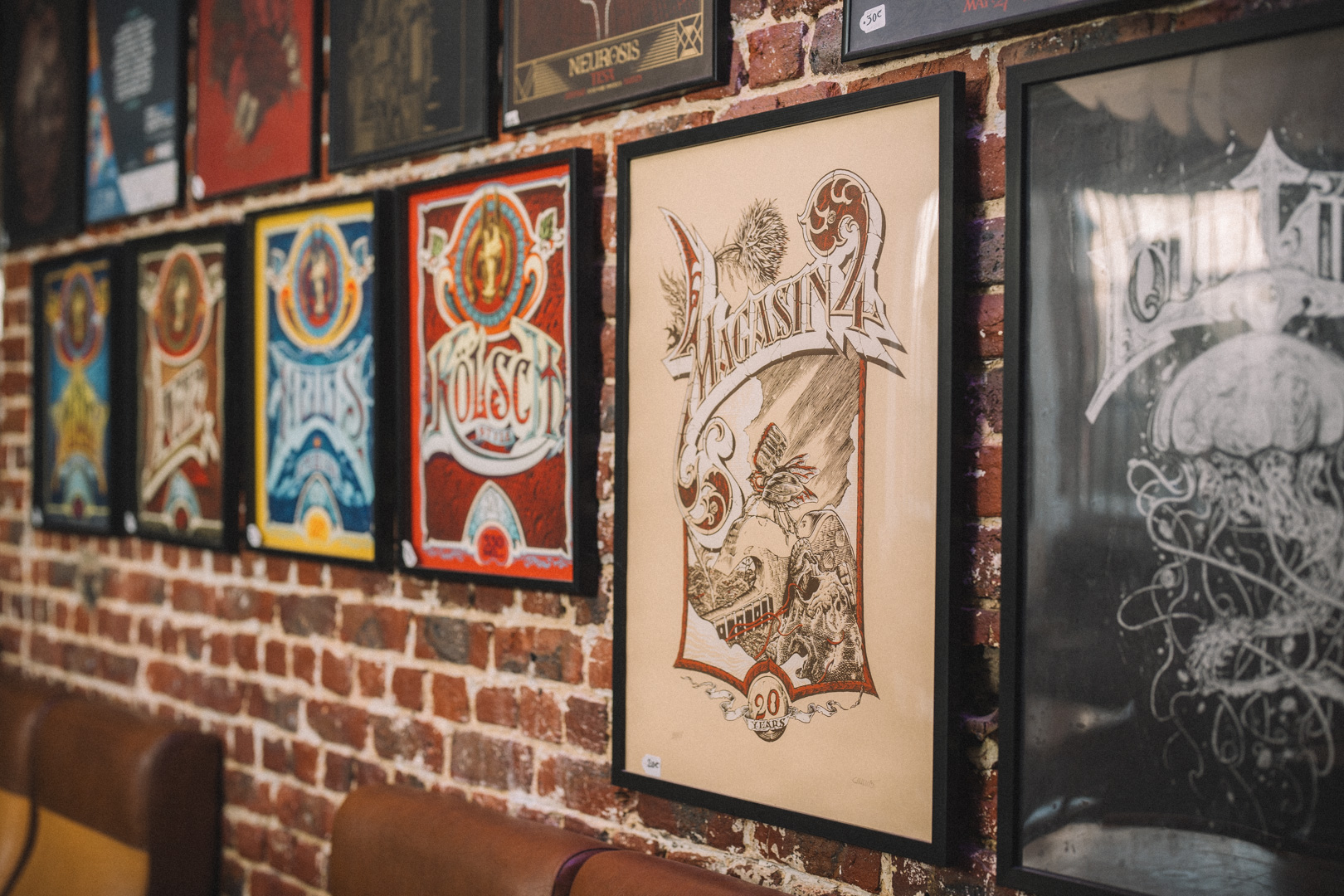
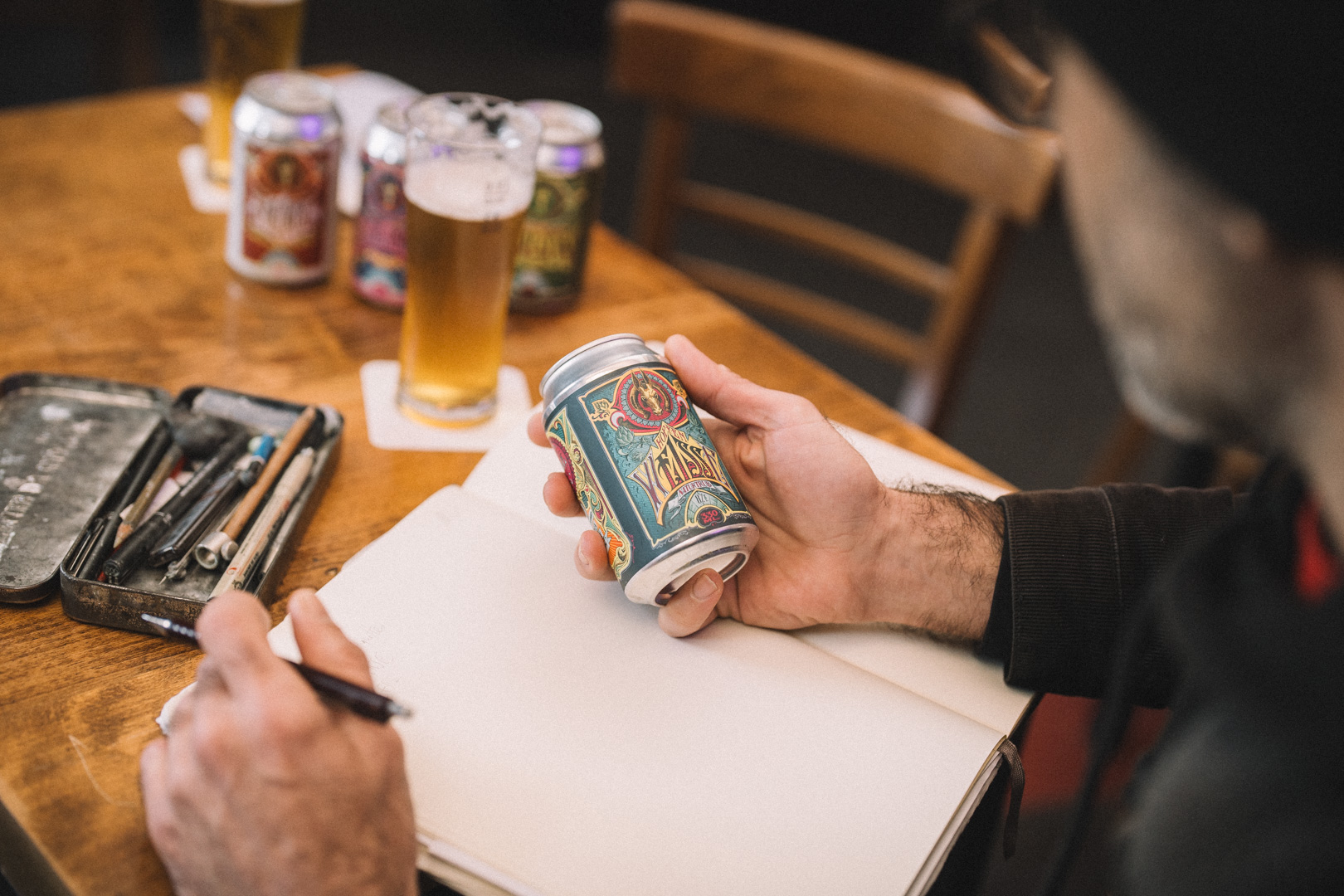

Everything—good and bad—Horn had learned at the Gele Poraa would be put into practice at La Mule’s bar. “Joël told me, ‘You have to do concerts,’” says Horn, though he didn’t need convincing, “because I love music, and I love free-admission music.” Hewing closely to Galy’s “No Geeks” attitude, the pair wanted the bar to be a community space, as welcoming to locals as it was to those who came for the music or the beer. It would also indulge Horn’s culinary passions, with a kitchen behind the bar serving Belgian brasserie classics.
Galy knew la Mule had to stand out, visually. 2020 was not 2010; in just a decade, the number of Brussels breweries had bloomed from two to almost 20, and this new-wave understood the importance of a strong identity as local competition increased for shelf and tap space. “It had to be recognisably Mule… Enough that a customer who sees our brand knows who it is and to trust what’s in the can,” he says. “[Ammo] was the first person I thought of”.
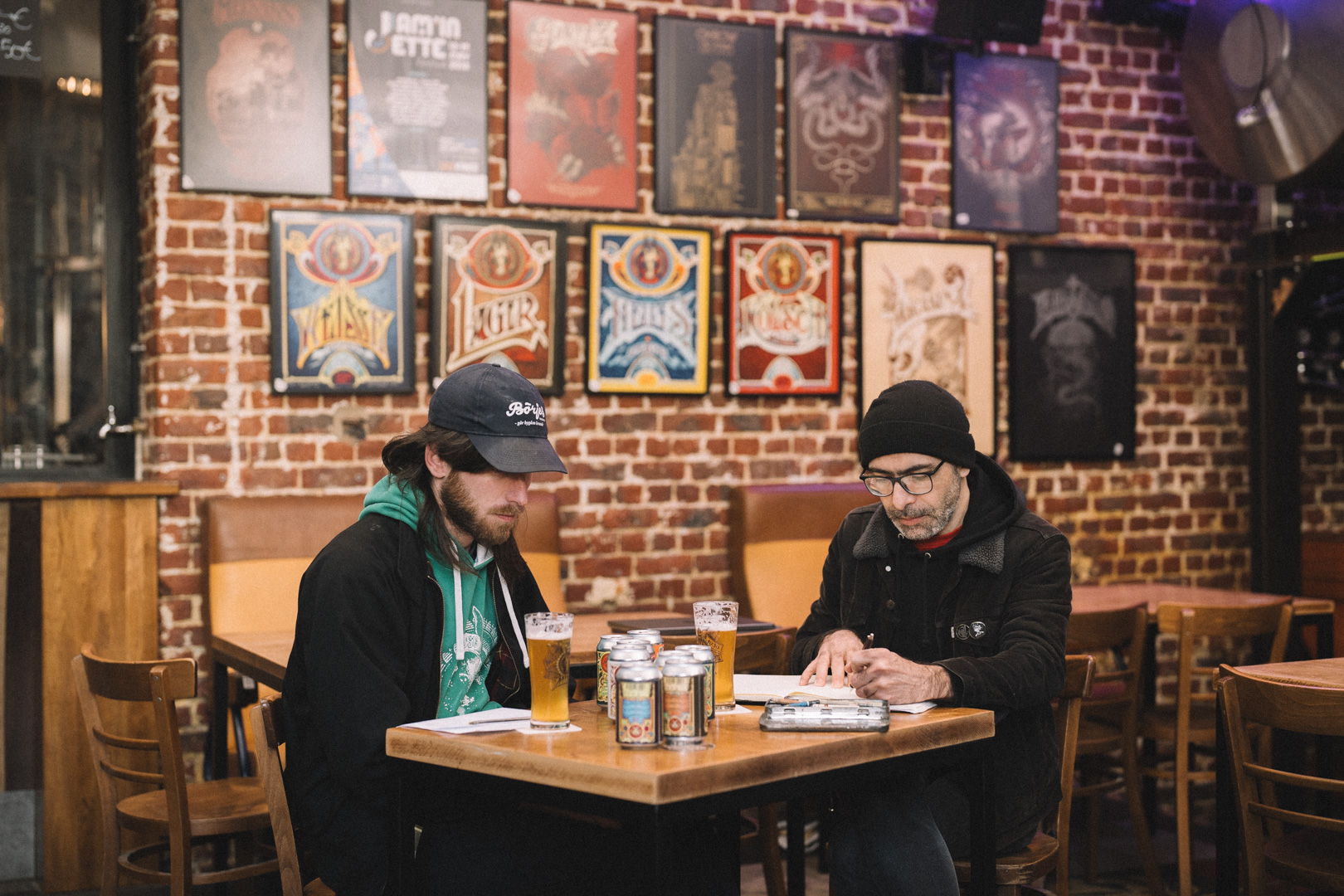
Ammo and Galy met throughout May 2020 for a few Covid-compliant outdoor cans in the park to talk through ideas. Galy would bring along books featuring German and American beer label artwork. “We found these old Budweiser cans. They were using 12 different fonts on one can…which is crazy,” Ammo says. But not too crazy. “Budweiser became a good point of direction for what everything was going to look like.”
The pair shared an appreciation for 19th and early 20th century typography-heavy designs, with a sprinkling of American Gold Rush-era iconography. Galy was taking a risk with his attachment to German beers, and encouraged his friend to be bold in his designs—more colour, less detail, cans over bottles. “I don’t have a reputation as a colourful artist. I love grey, sepia,” Ammo says. “Joël… just said, people really have to bleed from their eyes from the colour.”
By the end of that summer, the brewery was ready—on paper. Schematics for the bar were drawn up. The logo was set. The brewkit ordered. They had somewhere to put it too, a corner of Brussels with a historical but dormant connection to beer. Over half a century since the district’s last one closed its doors, Schaarbeek was getting a new brewery.

VIII.
City of Donkeys
Spread across Brussels’ eastern flank, Schaarbeek is the second largest and fifth most densely populated of Brussels’ 19 municipalities. Its relationship with beer goes back centuries. Orchards of tart, morello-style Schaarbeeksekrieken cherries once grew here and the regular traffic of donkeys bringing the cherry harvest into central Brussels, where brewers would buy them for their cherry Lambics, gave rise to the area’s nickname as the Ezelstad—donkey town.
Like much of a Brussels transforming itself amid 19th century industrialisation, the area hosted many breweries, right up until the 1960s, but that history is now largely confined to the private, hobbyist-run Schaarbeek beer museum near the town hall.
Schaarbeek is roughly divided into a more working class area around the Gare du Nord station, and a wealthier cluster up the hill towards the European district. In between is a mixed neighbourhood that has undergone significant gentrification in recent years, leading to socio-cultural tensions. Until relatively recently, however, Schaarbeek’s hospitality sector lagged behind the more rapidly-gentrifying neighbourhoods of St Gilles and Ixelles across town, and it was not always easy to find good beer within its borders. “We always had the impression that we were kind of left out,” he says. “[Particularly] because it’s one of the biggest communes in the city [and] we used to have such a strong beer history.”
That changed in 2015 with the opening of the Barboteur bottleshop-café several doors up from the beer museum. “That was huge news,” Cédric Dautinger of Beer.be says, and it presaged the arrival of other bars with locally-focused, considered beer menus. But no breweries.
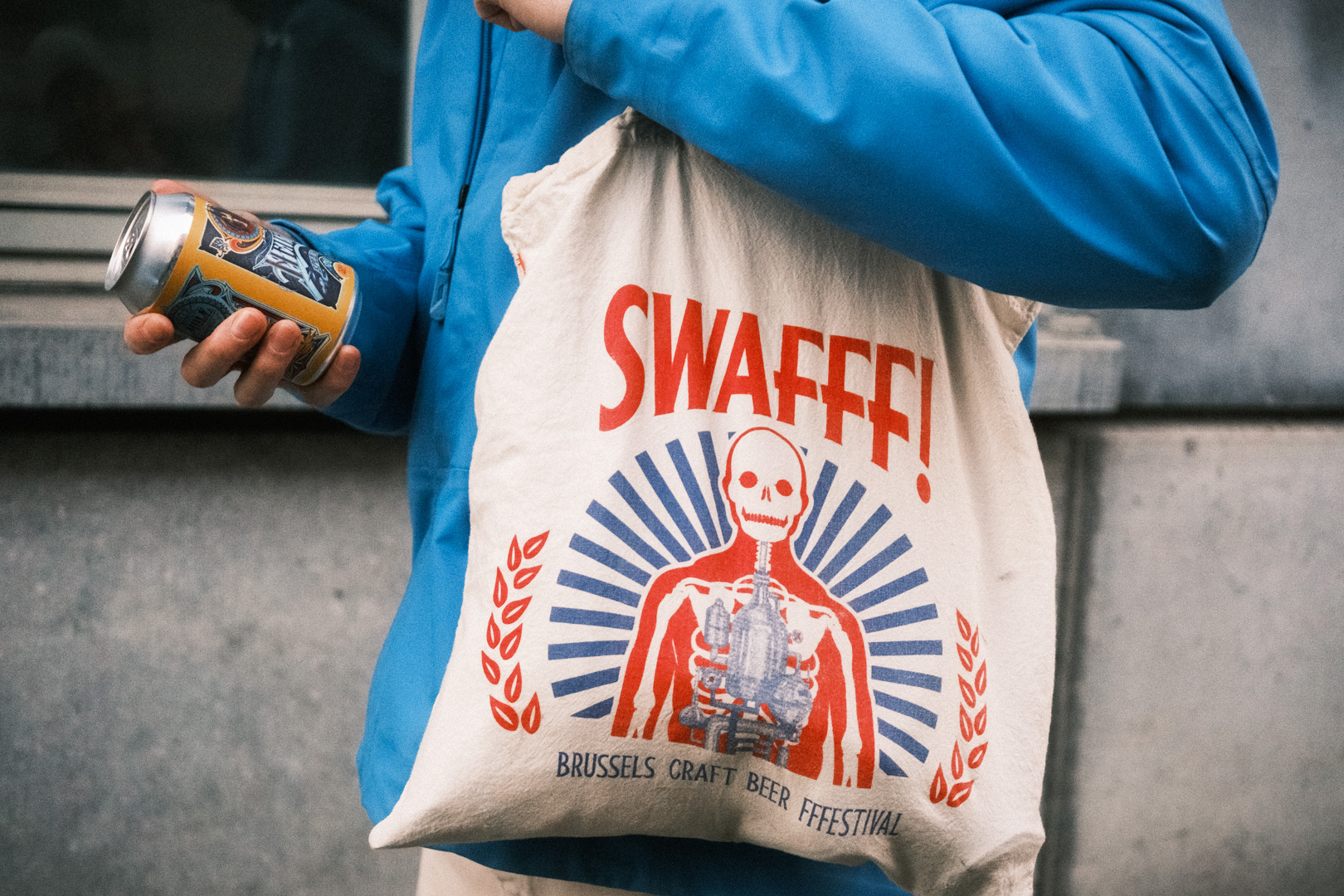

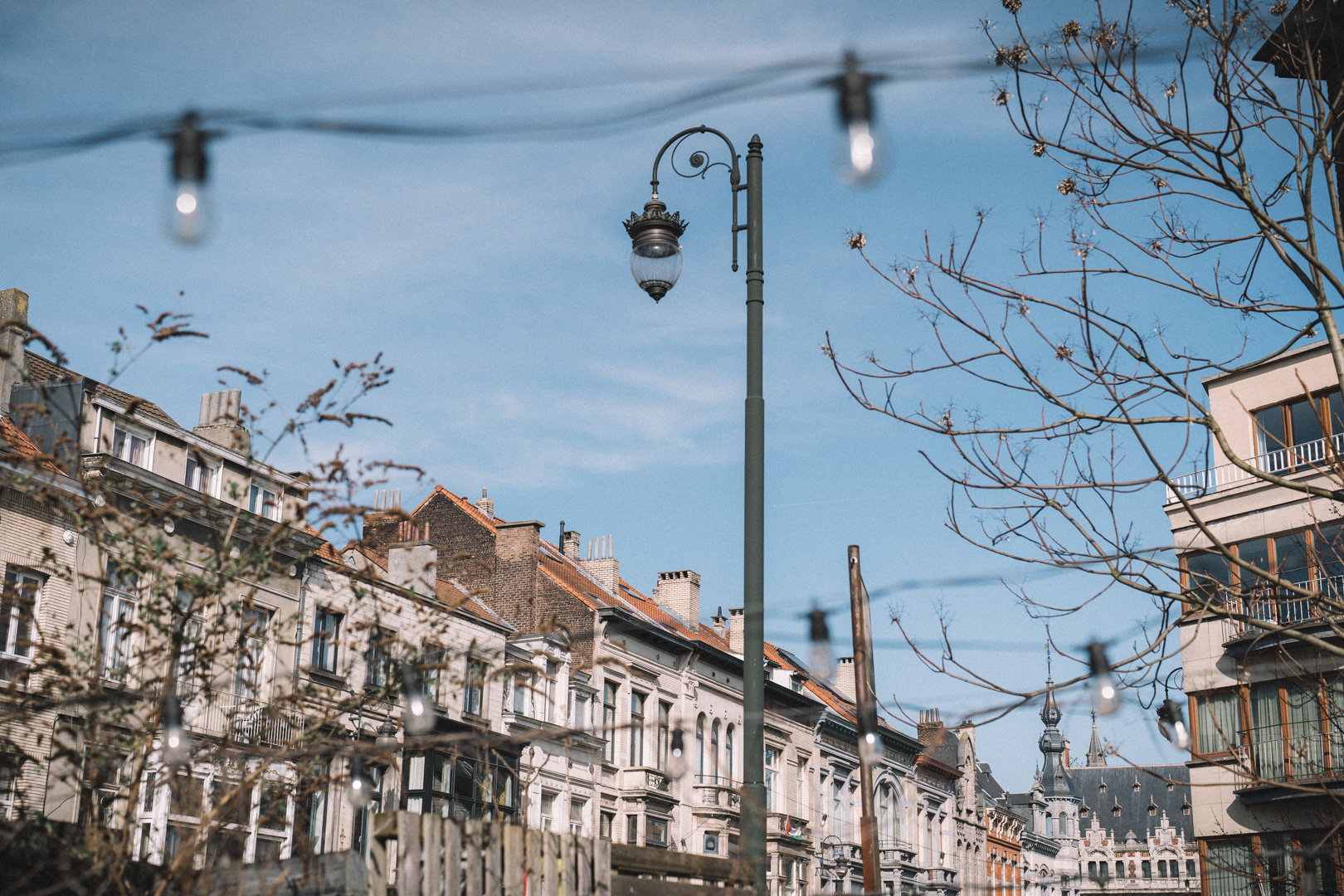
In 2017 Barboteur, the Malt Attacks beer shop, and Dynamo bar in St Gilles organised Schaarbeek’s first modern-day beer festival. SWAFFF—a play on the French word for thirst, soif—featured the new generation of Brussels breweries that Horn had been serving at the Gele Poraa alongside international invitees from Sweden, the UK, and Norway. This first edition took place in the abandoned former stables of a tram shed—the very same place, almost exactly three years later, Galy and Horn had chosen to be the home of Brasserie de la Mule.
The Ecuries du Tram had everything Galy was looking for—space for a brewhouse, and for expansion if needed; room for stock, space for a stage and a bar, and outside a terrace overgrown with weeds they could transform into an ersatz biergarten.
Horn—through his partner—may have found the location, but he wasn’t entirely convinced. Schaarbeek was unknown territory for him and Galy, and the site had already seen off one abortive attempt at installing a brewery. Several years previously, a consortium featuring Cantillon and Moeder Lambic had pitched the municipal council that owned the building on a bakery-brewery project that was ultimately unsuccessful. Moeder Lambic’s Jean Hummler spoke at the time of “surprising” levels of hate directed at the project. “I remember the politicians in the commune reacted quite strongly,” Dautinger says. “They were strongly against the project, because they felt that the people behind it were not from Schaarbeek, and were not genuine.”
But Galy wouldn’t be dissuaded, pushing Horn to abandon alternative sites in Brussels’ municipalities Jette and Laken. Galy’s stubbornness won out, and Schaarbeek it was. Contracts were prepared, equipment ordered, builders hired, and they were ready to go. Galy had secured €100,000 from the banks to get started, and his parents had contributed some seed money.
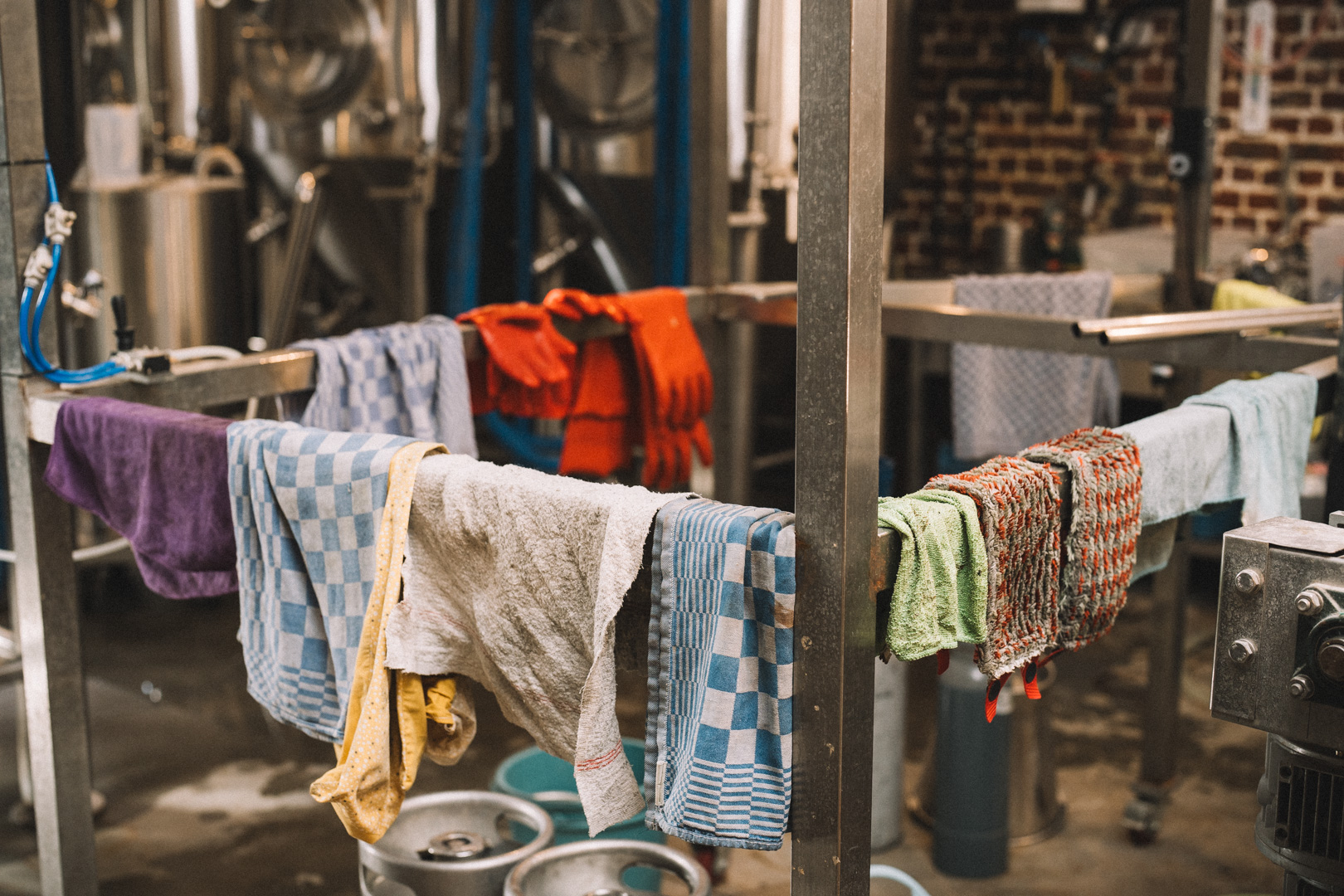


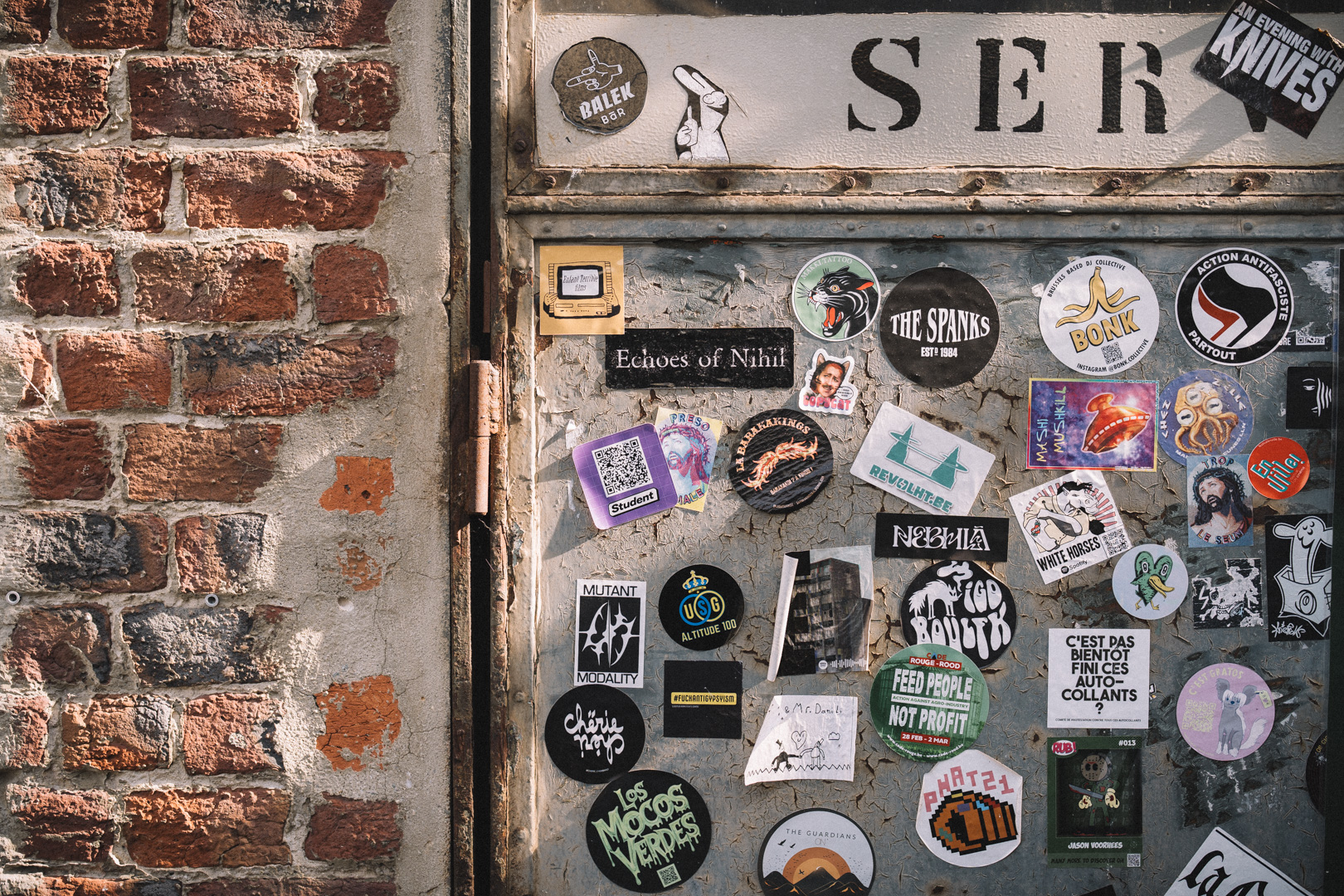
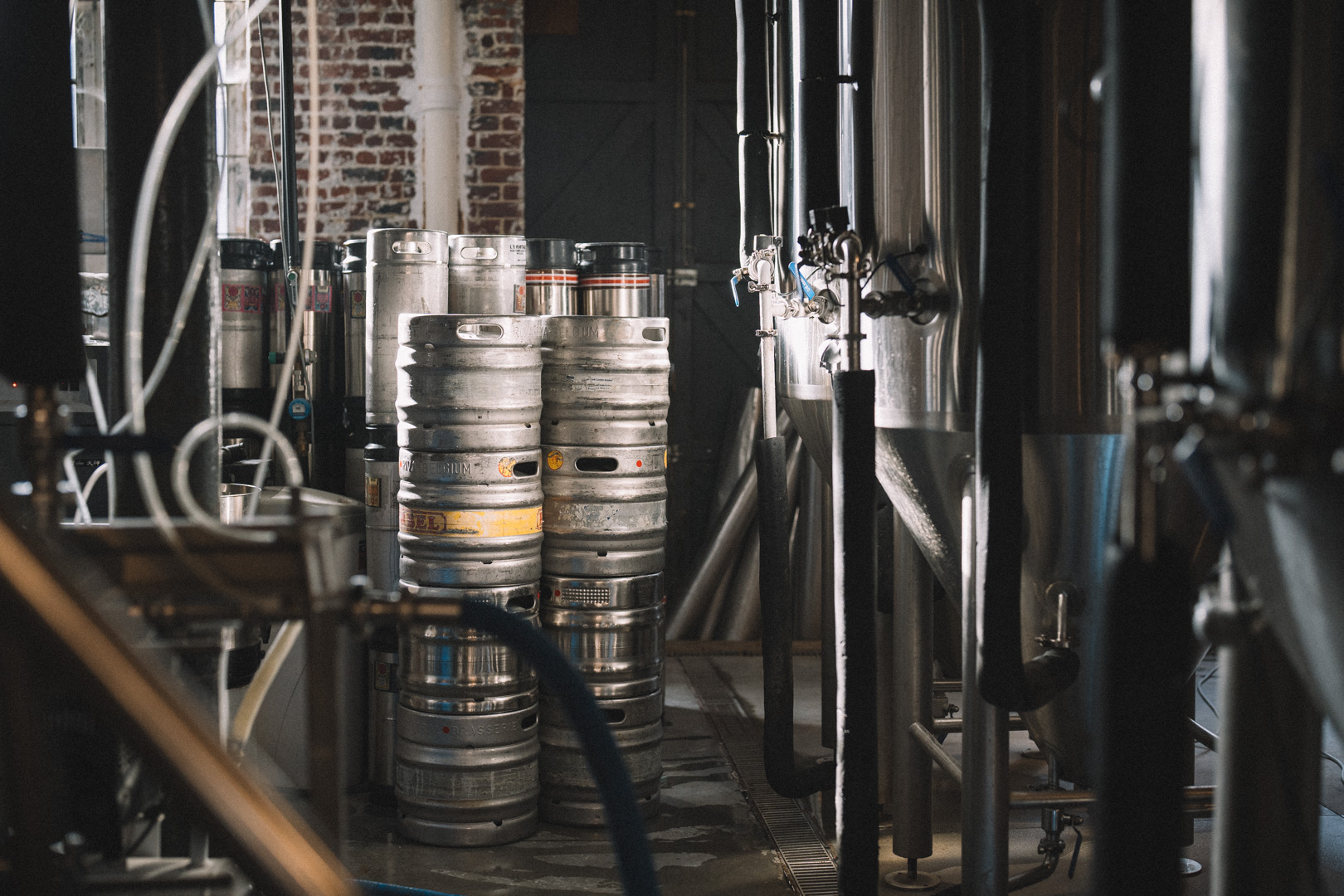
But then, as autumn advanced into winter in 2020, Galy began to get the distinct impression the building’s managers had cold feet about the endeavour. “I think maybe they thought we were these guys who [just] wanted to have fun,” he says. The tram sheds were owned by the local council, with management subcontracted to a third party, and there were regular debates in the nearby town hall about how best to run it—and what tenants to install (alongside the brewery was an organic food market).
Galy was forced to wade into this bureaucratic minefield in late-2020 to ensure La Mule had a home. “It was fucking crazy,” says Horn. “We were due to receive the kegging equipment and brewhouse at the end of January 2021, but…we were [still] not sure about the place.” Cue a period of intense telephone diplomacy between Galy and the town hall, the brewer determined not to have his dream denied him a second time. “Maybe it’s because I’m an Aries,” Galy says of his stubborn streak. The cajoling worked, and in November 2020 they received confirmation to proceed.
New floors arrived in December, and the following month the brewhouse arrived wrapped tightly in cling film and lined up neatly alongside the whitewashed arched roof and bare rebrick walls of its new home. On 21 April 2021, after a month of production finetuning and brewing calibration, the first cans of Brasserie de la Mule’s Hefe Weisse Naturtrüb—clad in a bright blue, yellow and fuschia Ammo original—were released into the world.
IX.
Ein Prosit, ein Prosit
On the last Saturday of September every year, thanks to Joël Galy and his mulish colleagues, a small corner of Schaarbeek now transforms itself into a Bavarian beer tent for just one night. The smell of smoked charcuterie cooking over an open grill mixes with the stink of passing traffic, and car horns battle with the parps and bleats of an oompah band. Behind the tram shed’s redbrick walls are reams of blue-and-white bunting, and staff don imitation dirndls to ferry litres of Brasserie de la Mule Lager to thirsty drinkers.
The tradition began in September 2022, a way to honour the brewery’s German inspiration and mark the bar’s informal first birthday. It was the culmination of Joël Galy’s, Brasserie de la Mule’s, and German Lager’s infiltration of the Brussels beer scene.
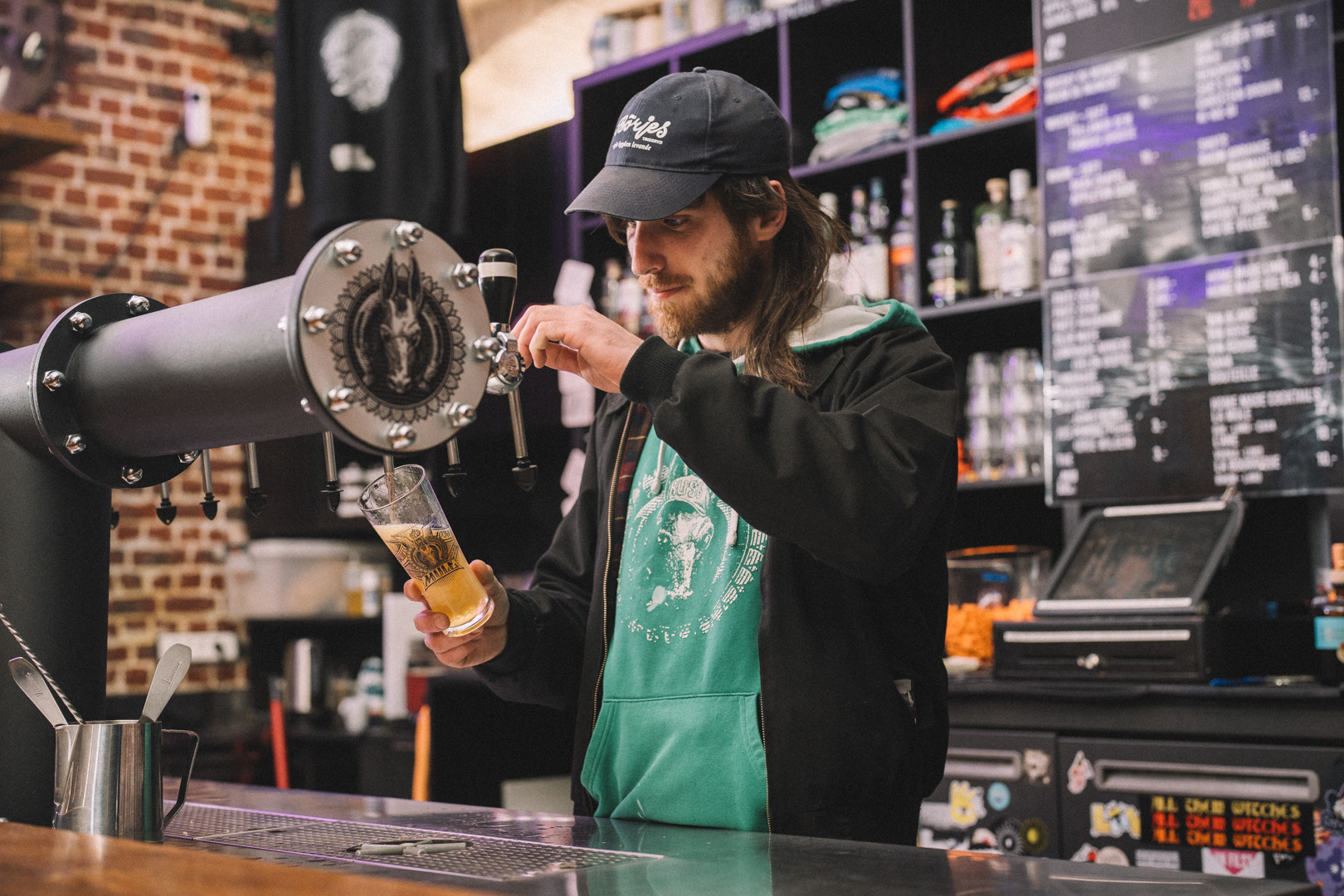
Kinski’s manic Fitzcarraldo bungled his dream of an Amazonian opera house. Galy, a more mild-mannered firebrand, was more successful. In the five years since that first April 2021 brew, de la Mule has produced Schwarzbiers, Berliner Weisses, Rauchbiers, Doppelbocks, and even a Folköl. He’s brewed with and for Moeder Lambic, Malt Attacks, Dynamo, the Python bar in Schaarbeek, and smuggled de la Mule Lagers onto restaurant drinks menus across the city.
There has even been the odd “stupid IPA”, and not long before that first Oktoberfest, Galy got a call from his old boss Yvan De Baets asking if he might like to take one more tilt at the first ever commercial beer he brewed for Zinnebir’s 20th anniversary—only with a Galy-inspired twist. “We both came with the exact same idea without talking first to each other,” De Baets says. “I don’t know which of us told the other we should make it a Zinnebir Lager—but immediately the other said, ‘That was in my head too!’”
Brasserie de la Mule’s brewery in the old tram shed has grown, filling the buildings’ empty spaces and doubling brewing capacity even as Galy and everyone else wrestled with the one-two punch of the pandemic and inflation. Horn’s kitchen never materialised, its intended location making way during a 2024 renovation to accommodate more concert-goers. But the bar has grown to become everything Horn wanted—as welcoming to locals popping in for a post-work beer as for drinkers coming for stand-up gigs and headbangers attending the regular concerts.
Ammo’s intricate line drawings for de la Mule’s labels are hung on every wall. “It’s Joël’s brewery, definitely,” Ammo concedes, admitting that it wouldn’t exist without Galy’s drive. But Ammo also refers to de la Mule as “my brewery” and “our project”. “With De Ranke, or Cantillon, I just draw,” says Ammo. “But we built [this], and had the idea for it, together.”
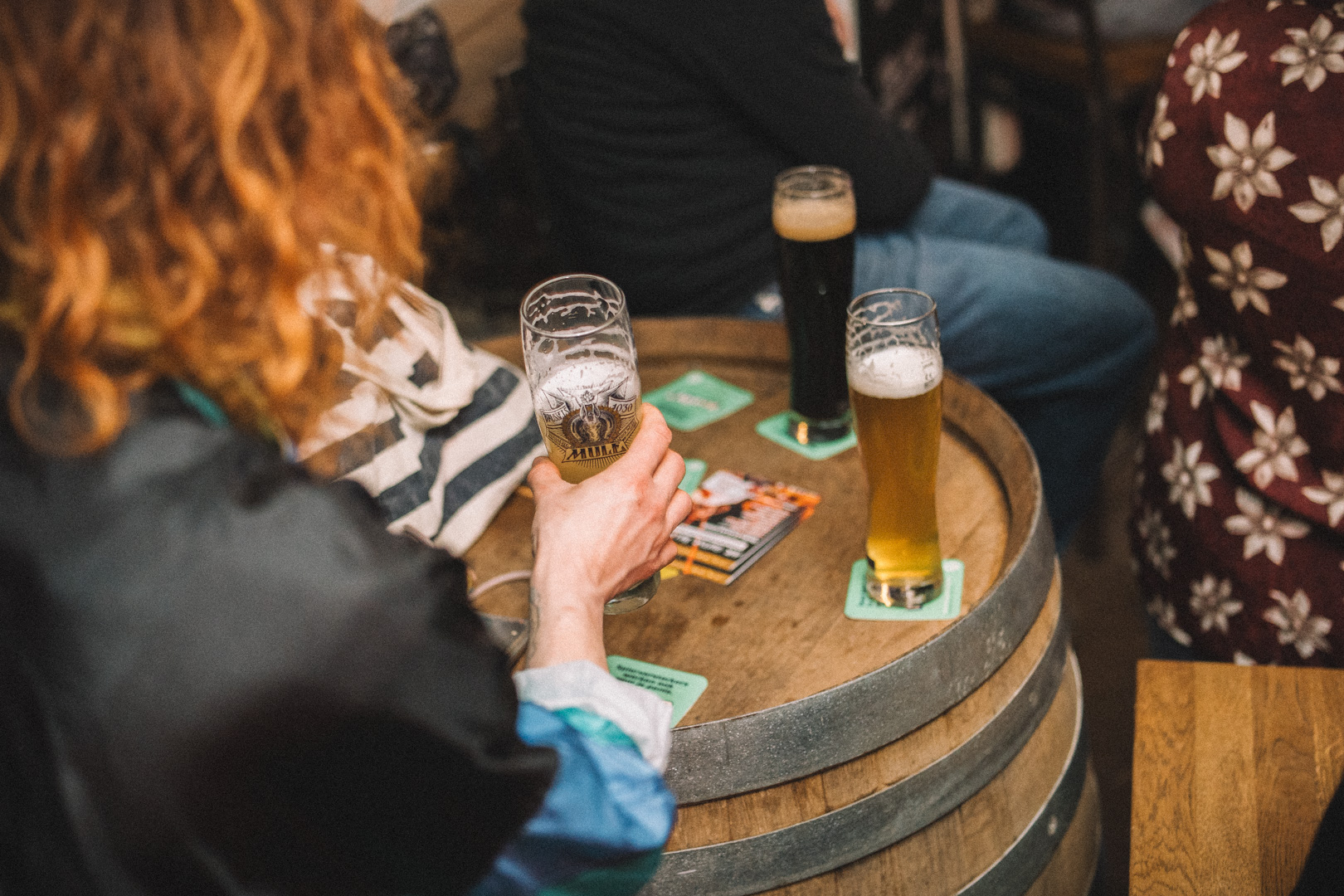
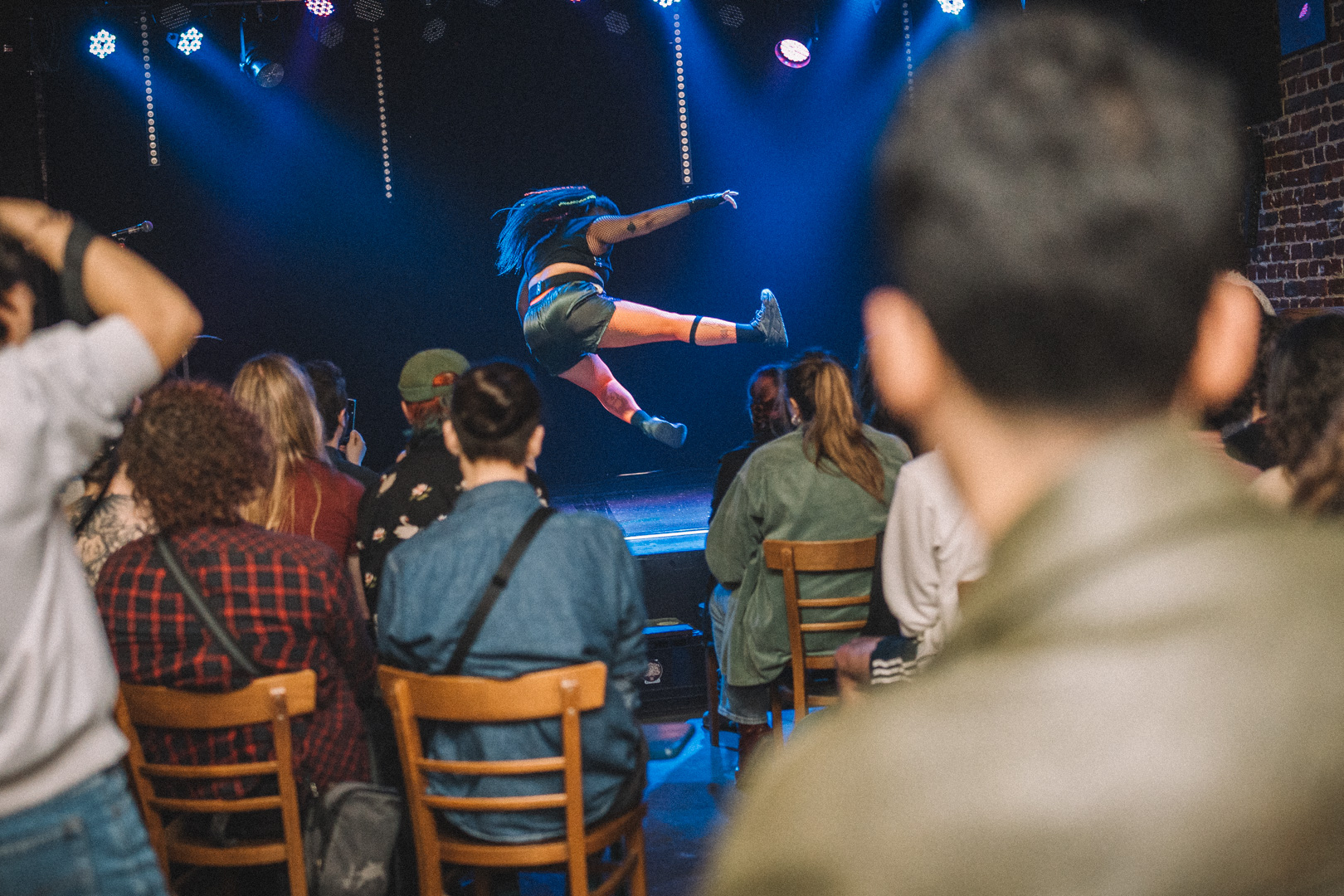
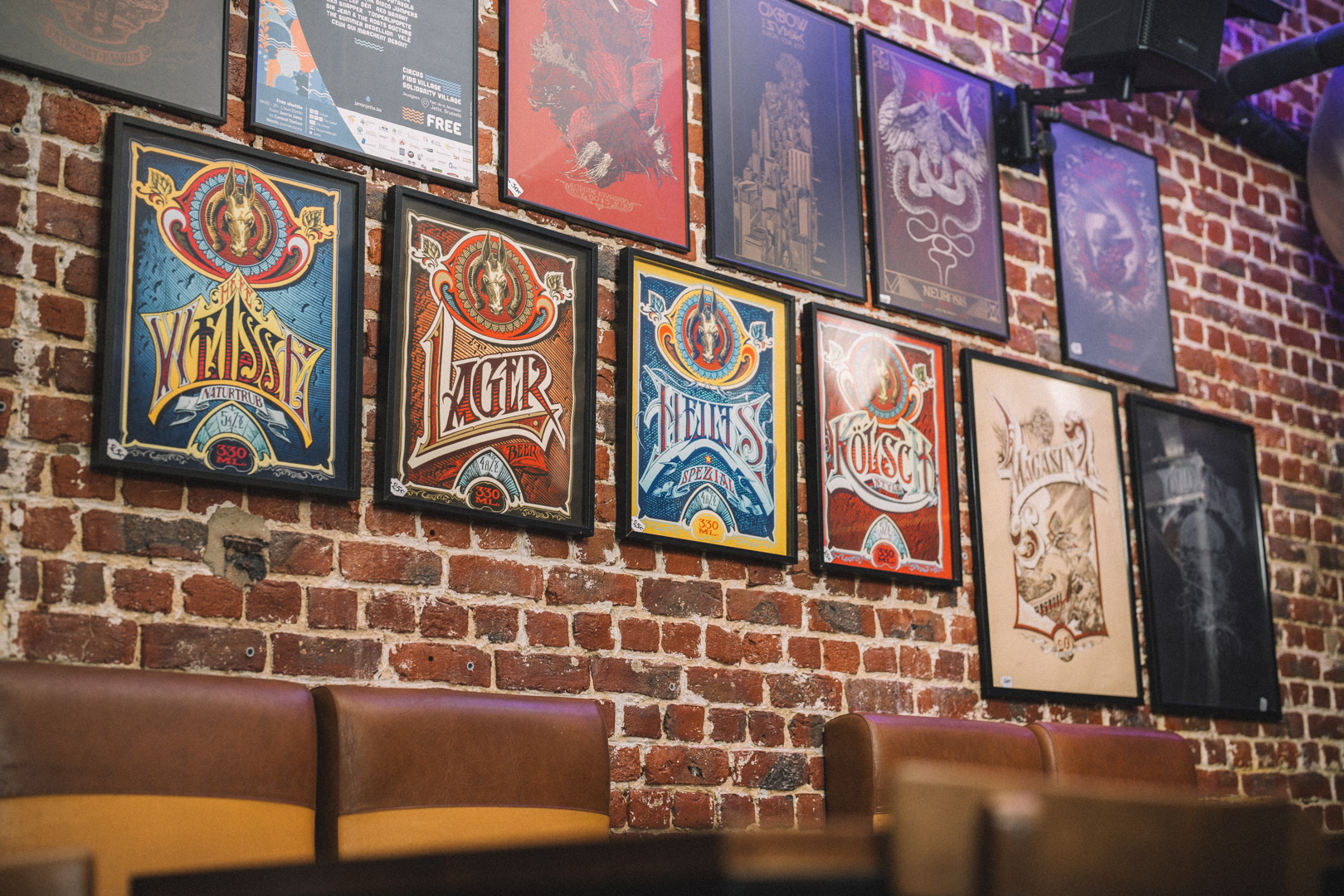
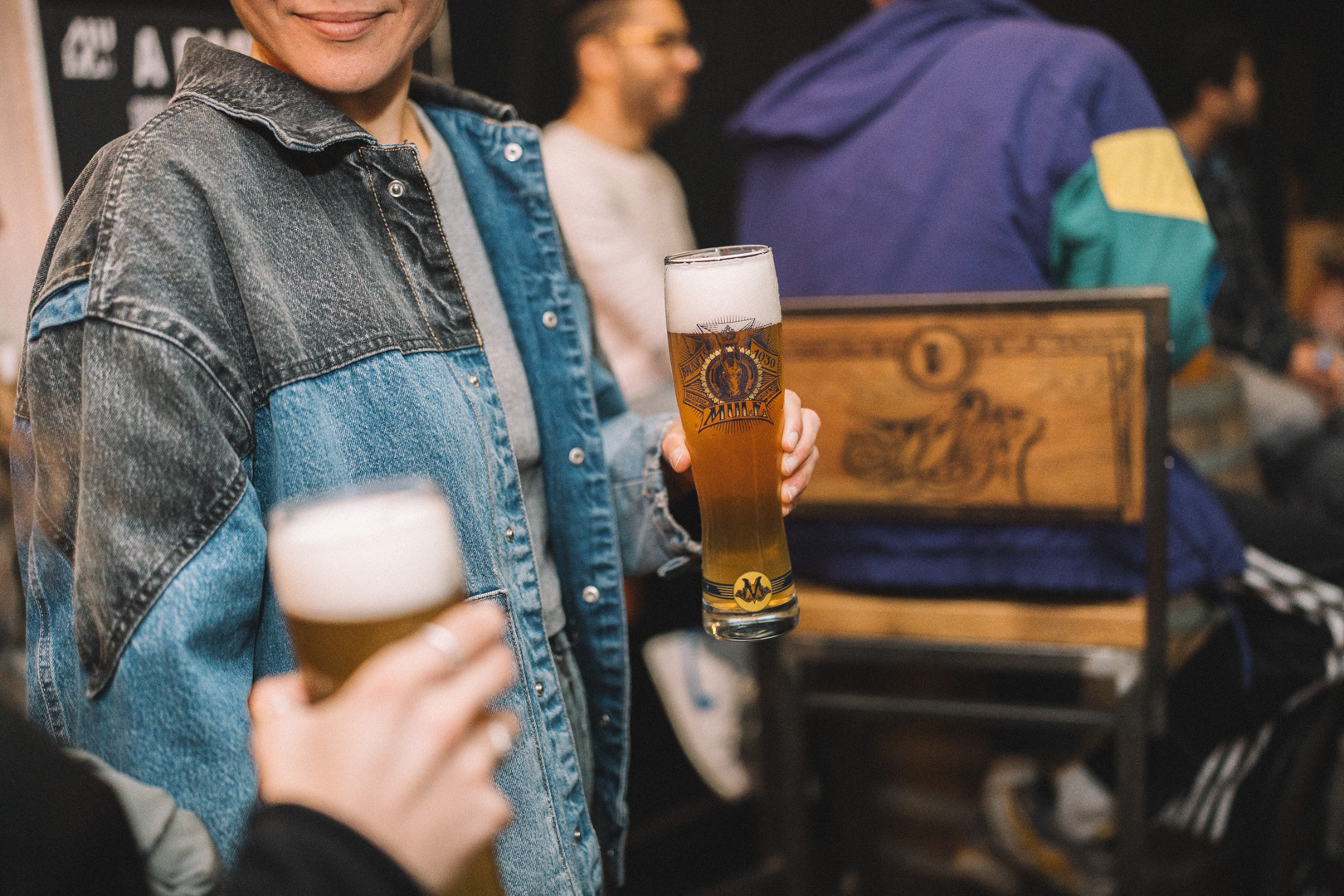

With its taproom-neighbourhood bar moonlighting as a concert venue, its anchor in the local community, its idiosyncratic branding, its dogged pursuit of its own niche, and its organic growth, Brasserie de la Mule is archetypal of the Brussels new wave brewing revival. That it remains a family affair was in evidence at that first Oktoberfest. At a small table by the main stage Ammo sat with his family. Not far from him, on the other side of the bar Horn, dressed in porkpie hat and apron made up like an Oktoberfest waitress, bent down to scoop up his red-faced toddler. Beside him was Galy and his partner, with his mother due in for a drink later.
Out in their urban biergarten, among the locals, musos, and beer scenesters, Cédric Dautinger—who’d hosted his wedding reception at the brewery that summer—huddled with his wife around tables heaving with half-empty Maßkrugs of beer auburn and straw, hazy and translucent. Beside a decommissioned tram a food station pumped chip fat and curry powder into the night air, and wicker baskets of bretzels were piled next to squat wooden barrels doling out bonafide Bavarian classics from Schlenkerla, Tegernsee, and Rothaus.
Inside, drinkers wolf whistled after the final trumpet toot of a Schlager rendition of “My Way” before the bandleader of the Belgo-German oompah group—in feathered cap and lederhosen—wound himself up to lead the heaving crowd in another rendition of the Bavarian drinking song Ein Prosit, its German lyrics of “one, two, three, drink!” constituting a toast to well-being.
Standing next to tall, thin glasses frothy with amber lager, Galy looked almost like Kinksi at the end of Fitzcarraldo, at the moment while he is floating down the Amazon and finally hears a European tenor singing—joyful, surprised, relieved, and satisfied. “I’m so happy. It’s like a dream, my own dream,” said Galy, pausing to look around. “I just make the beers, the people make the rest.”
With that, Galy and Horn were summoned onstage. Trumpets honked into life for another round of Ein Prosit, Horn and Galy screaming the words into the microphone. Hands shot into the sweaty air, Galy bopping along as Horn next to him conducted the crowd in another Belgian-accented chant of “Oans, zwoa, drei, Gsuffa!”
*


